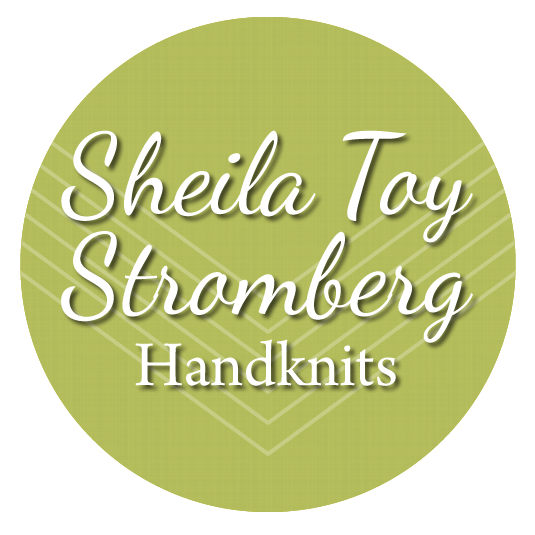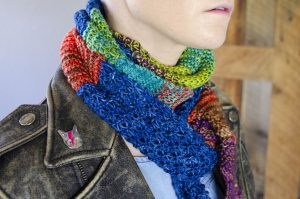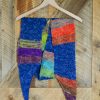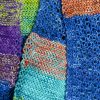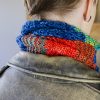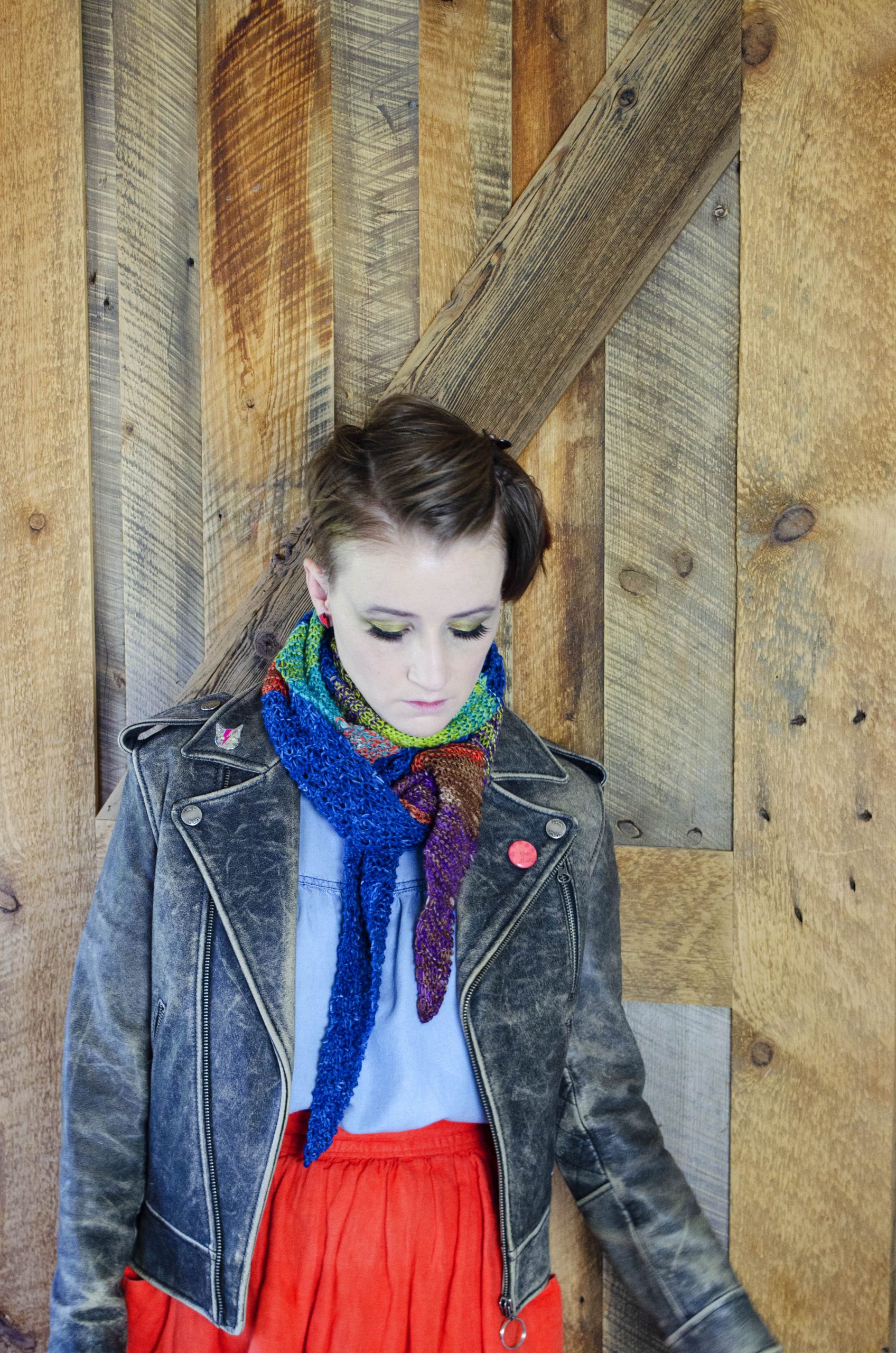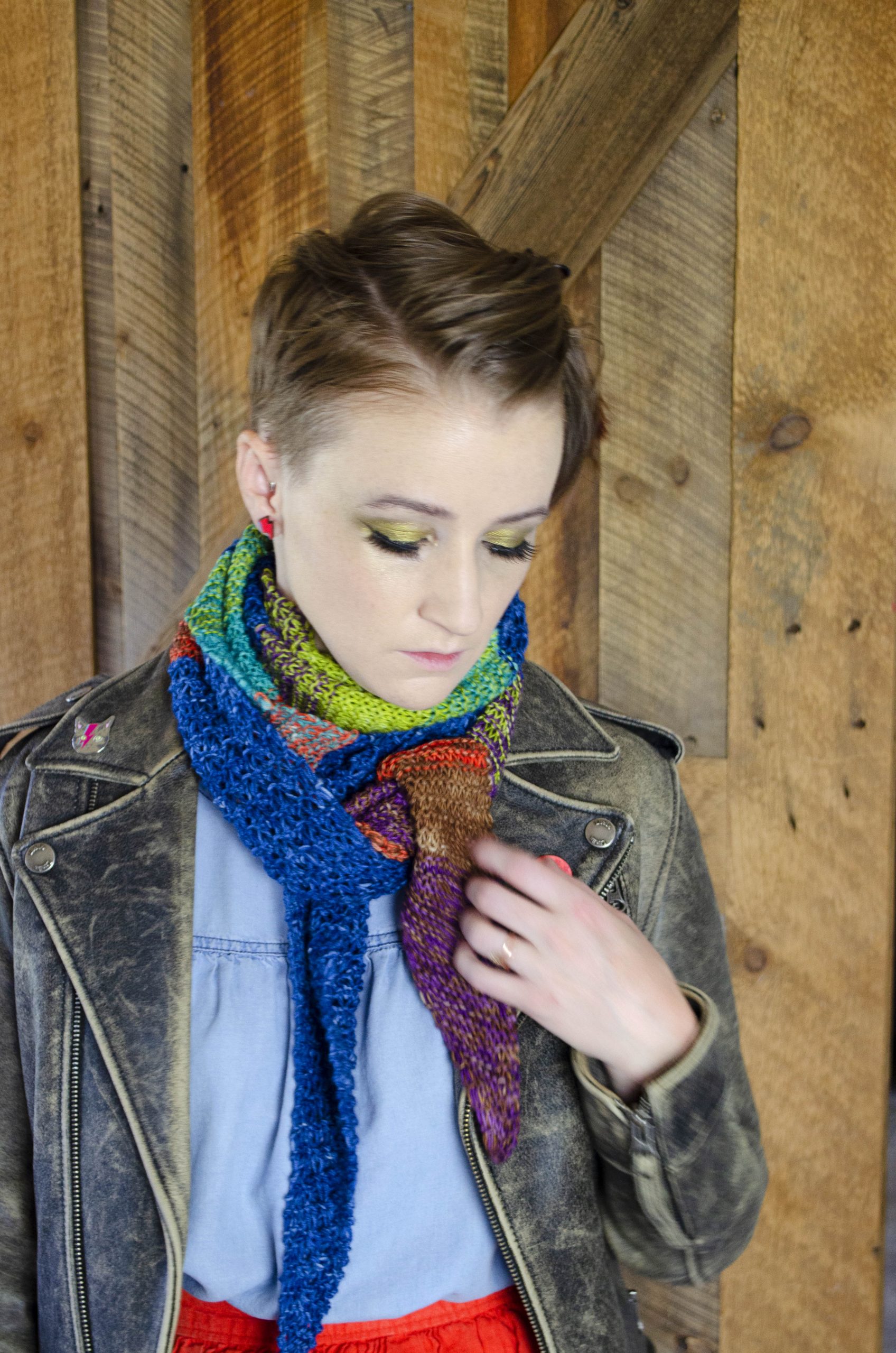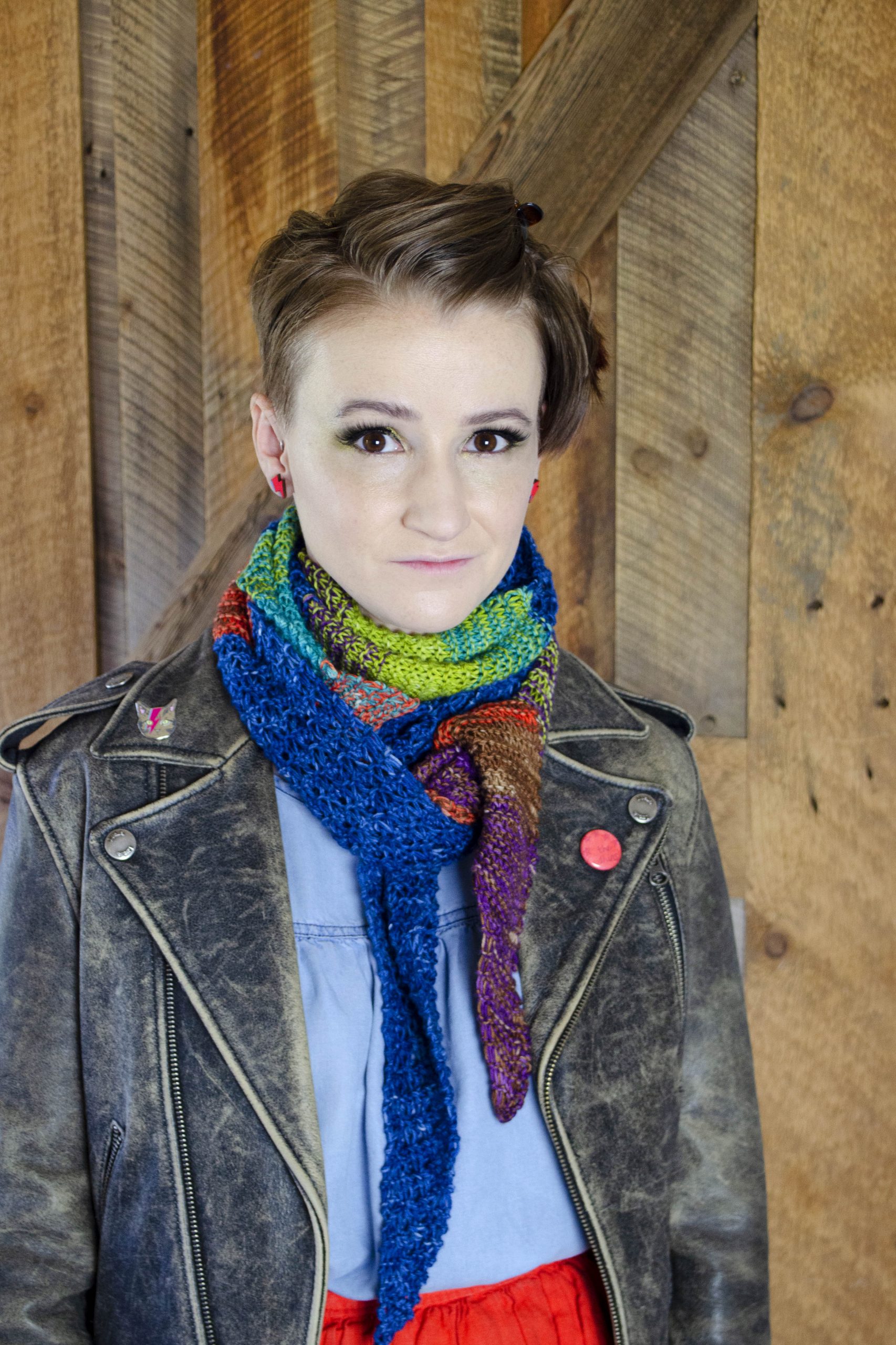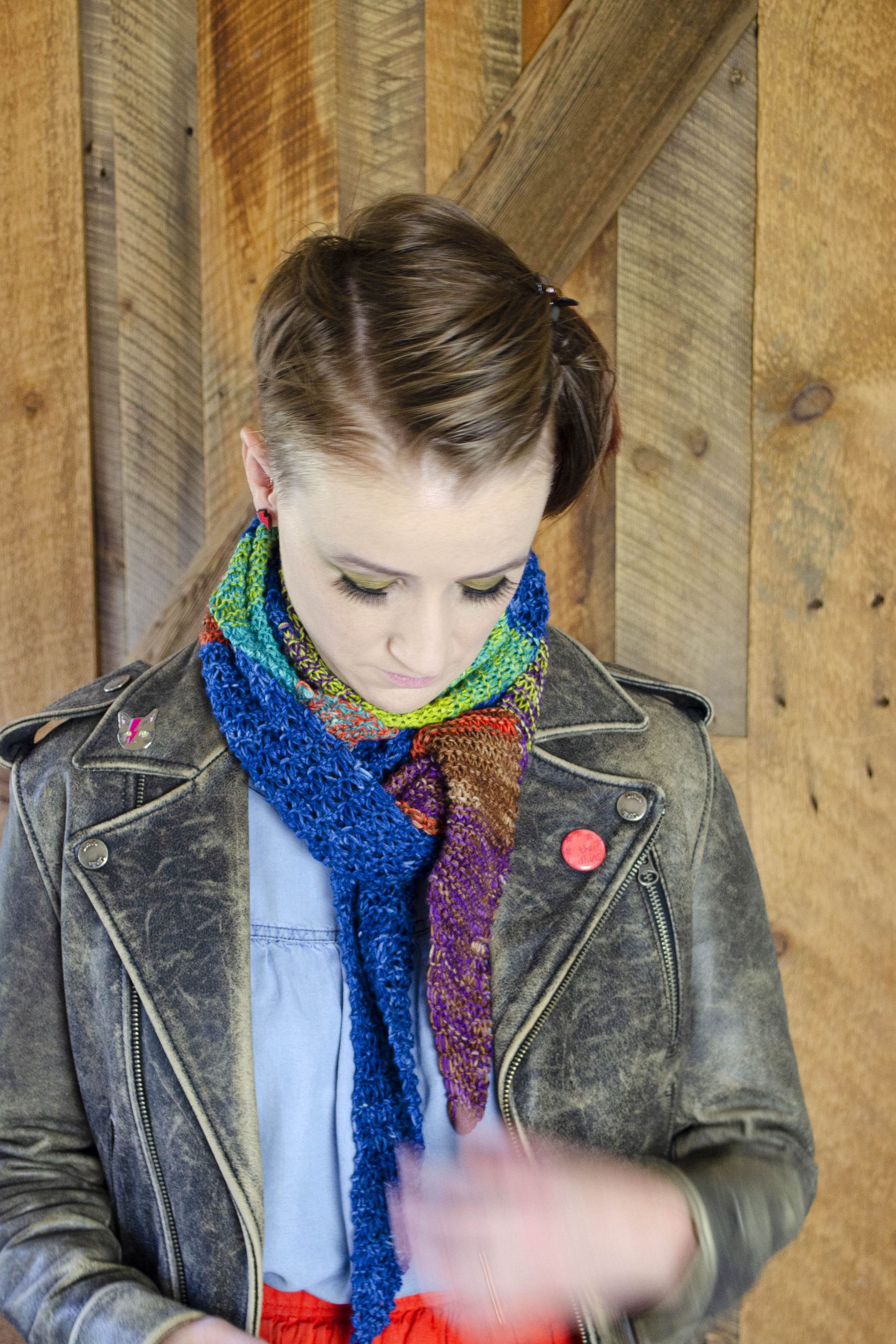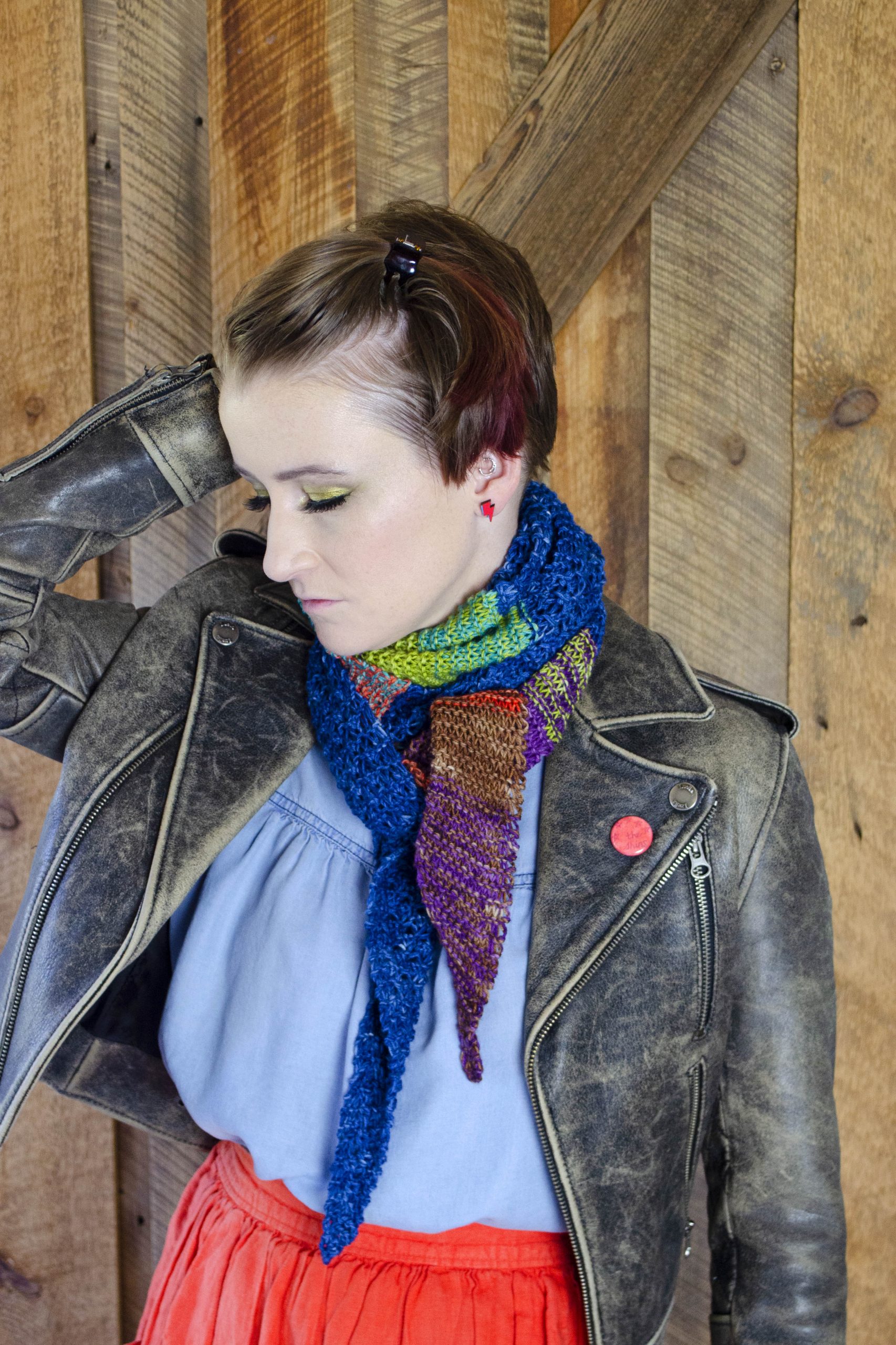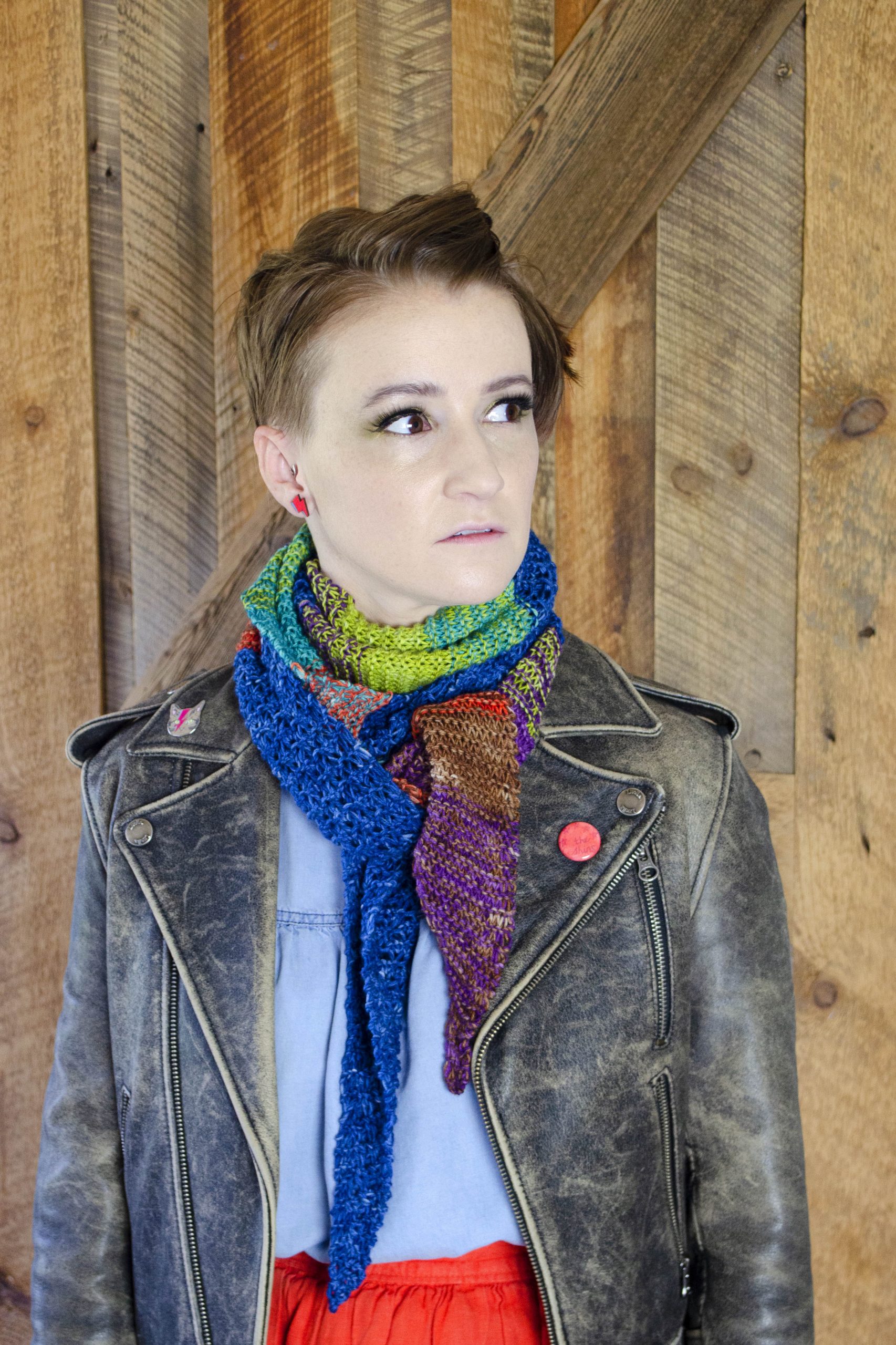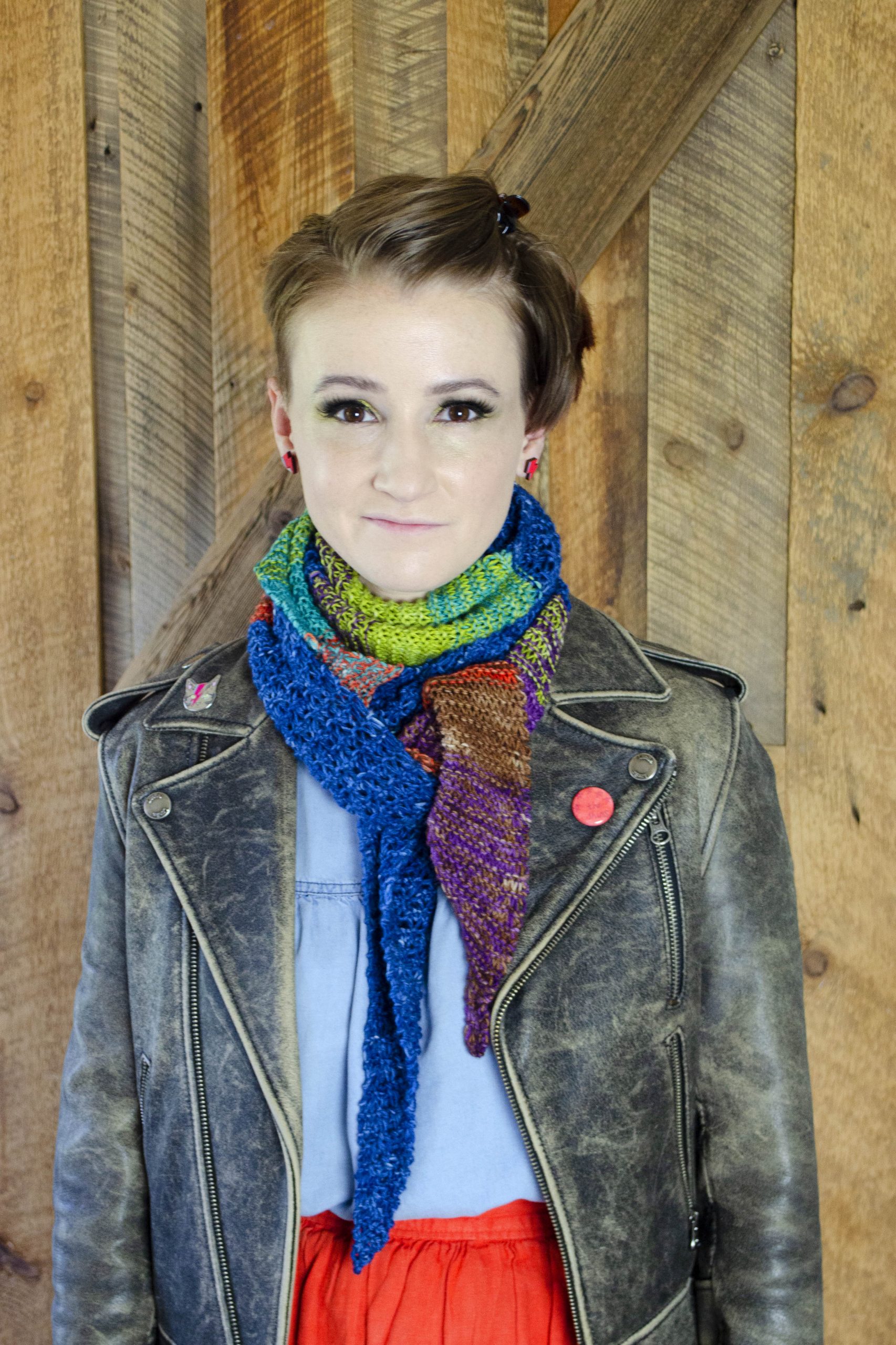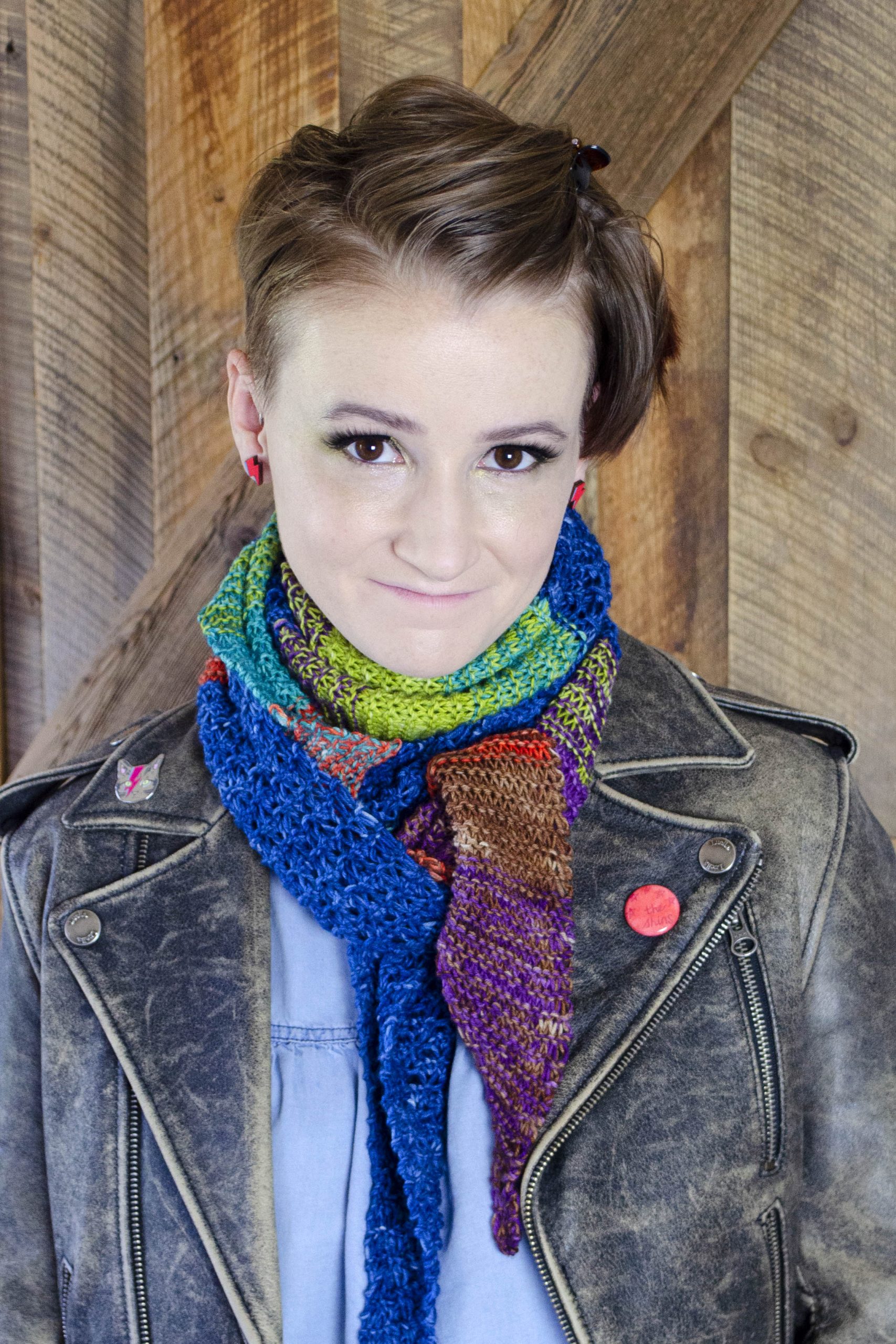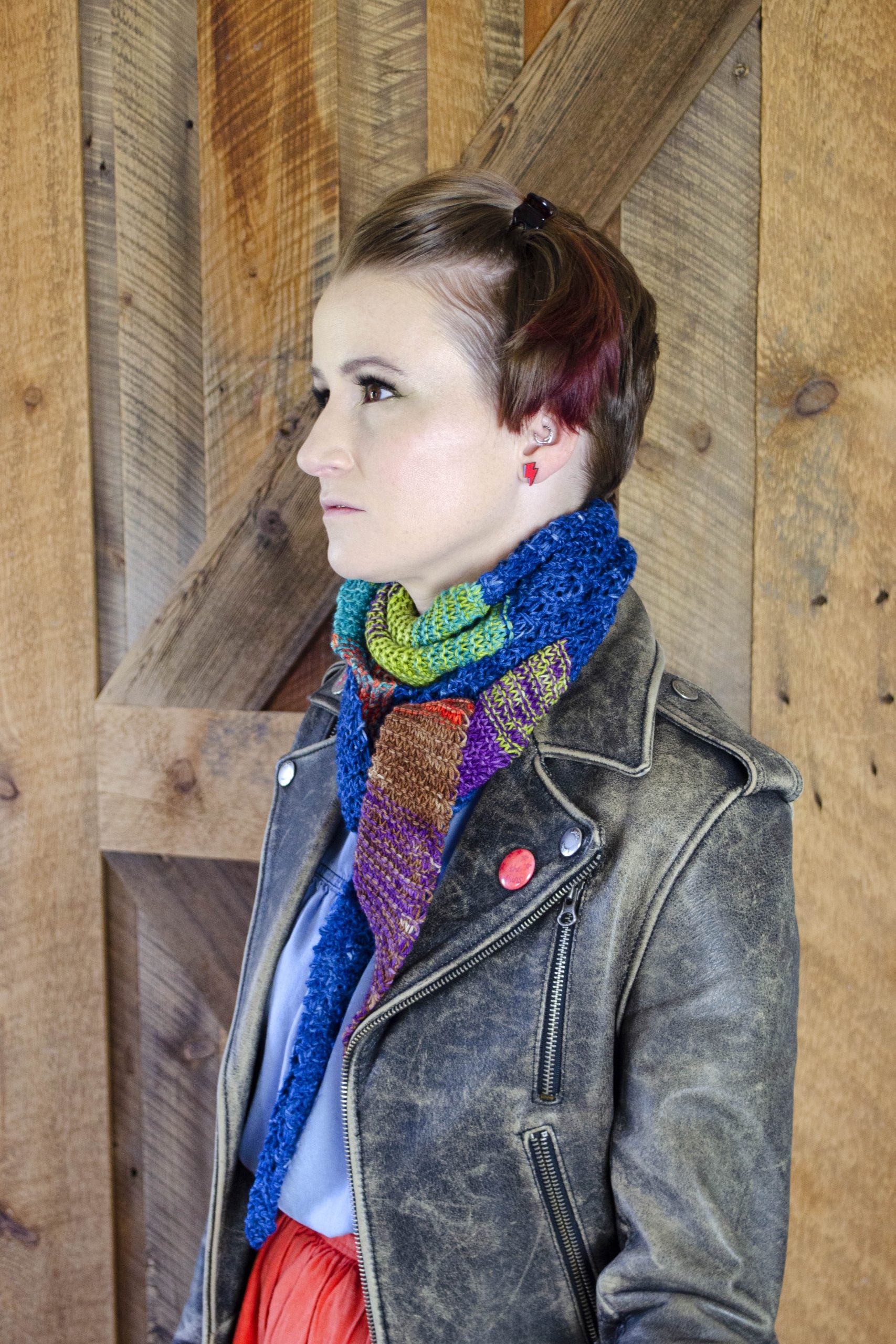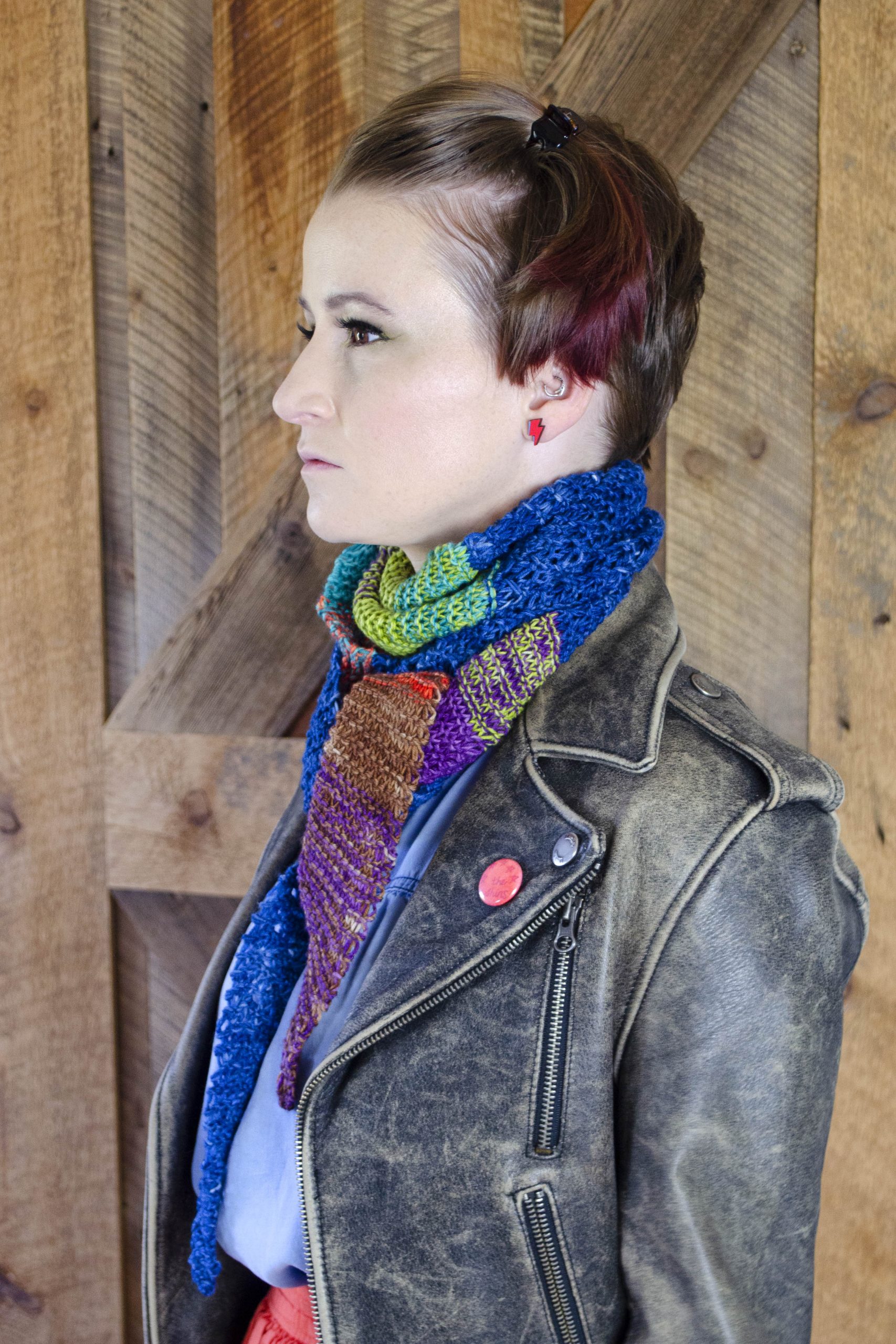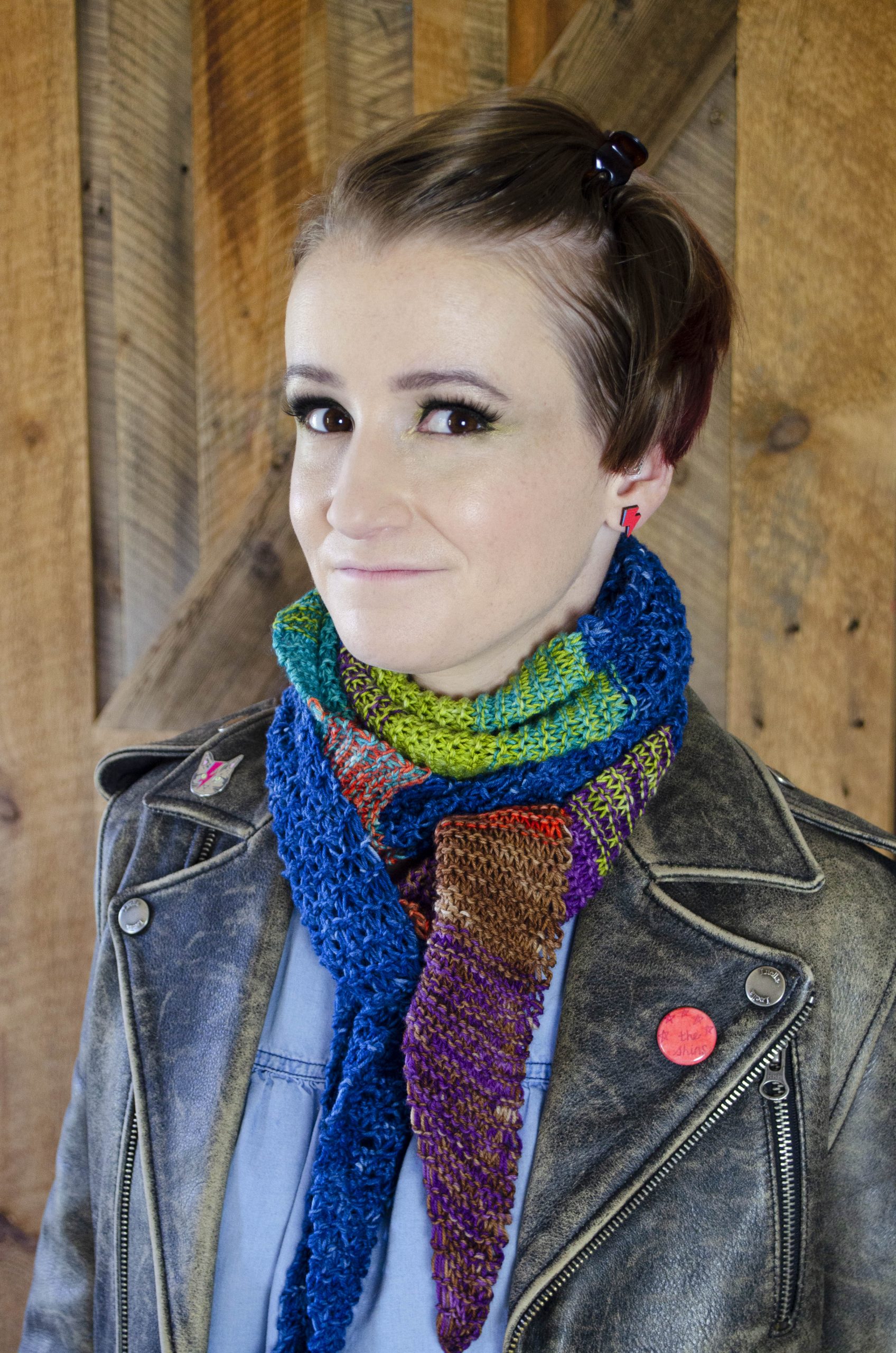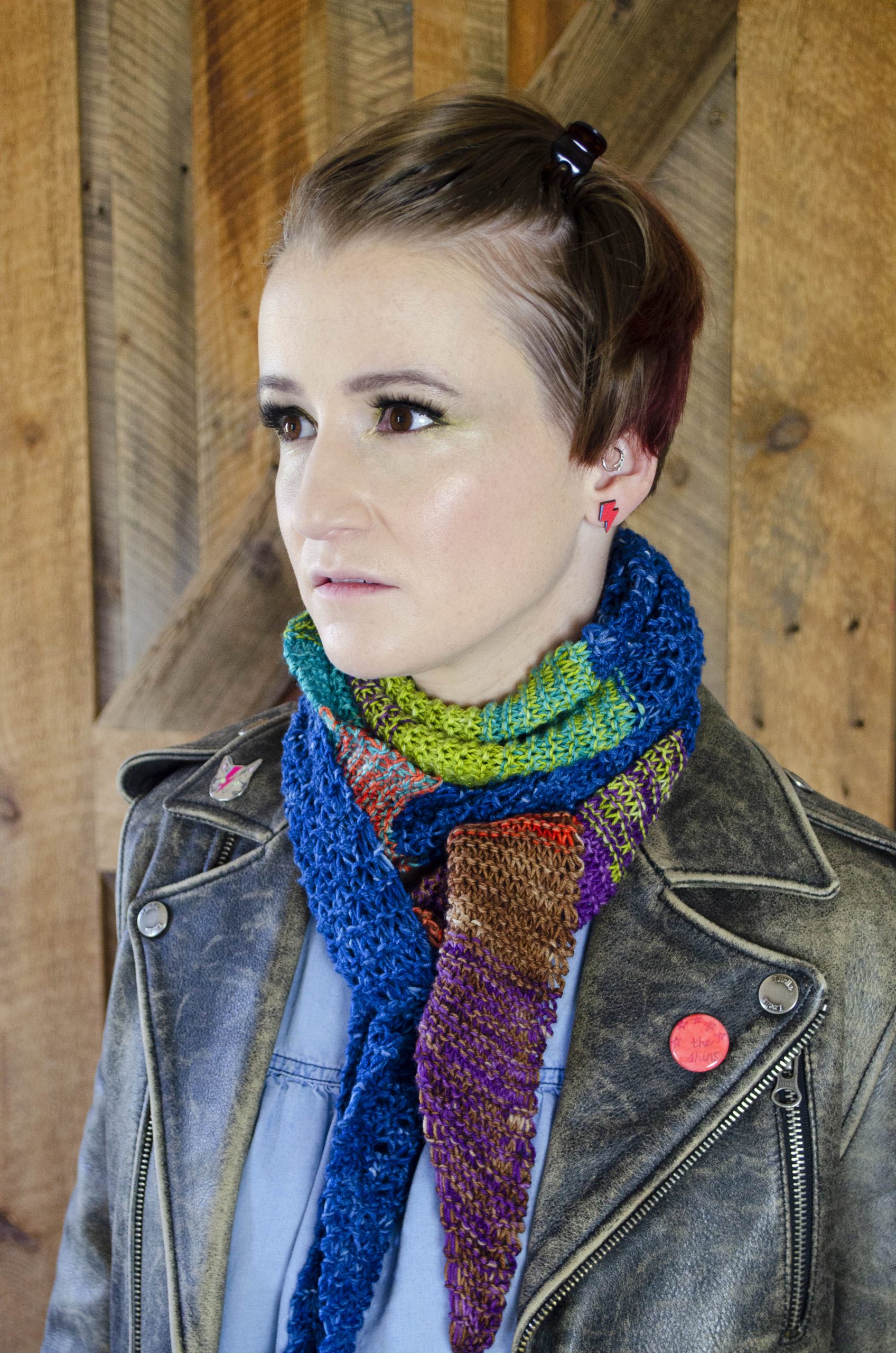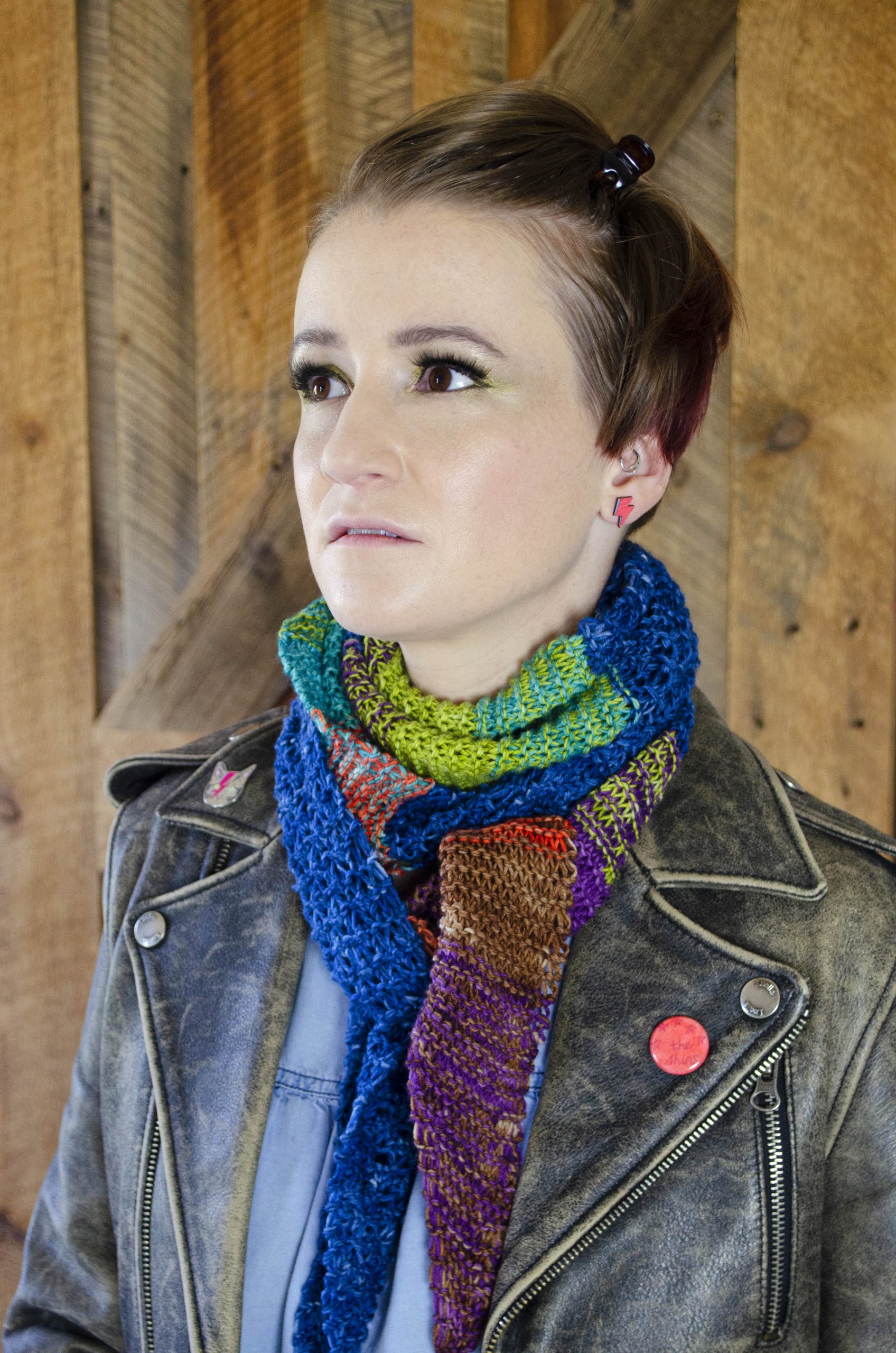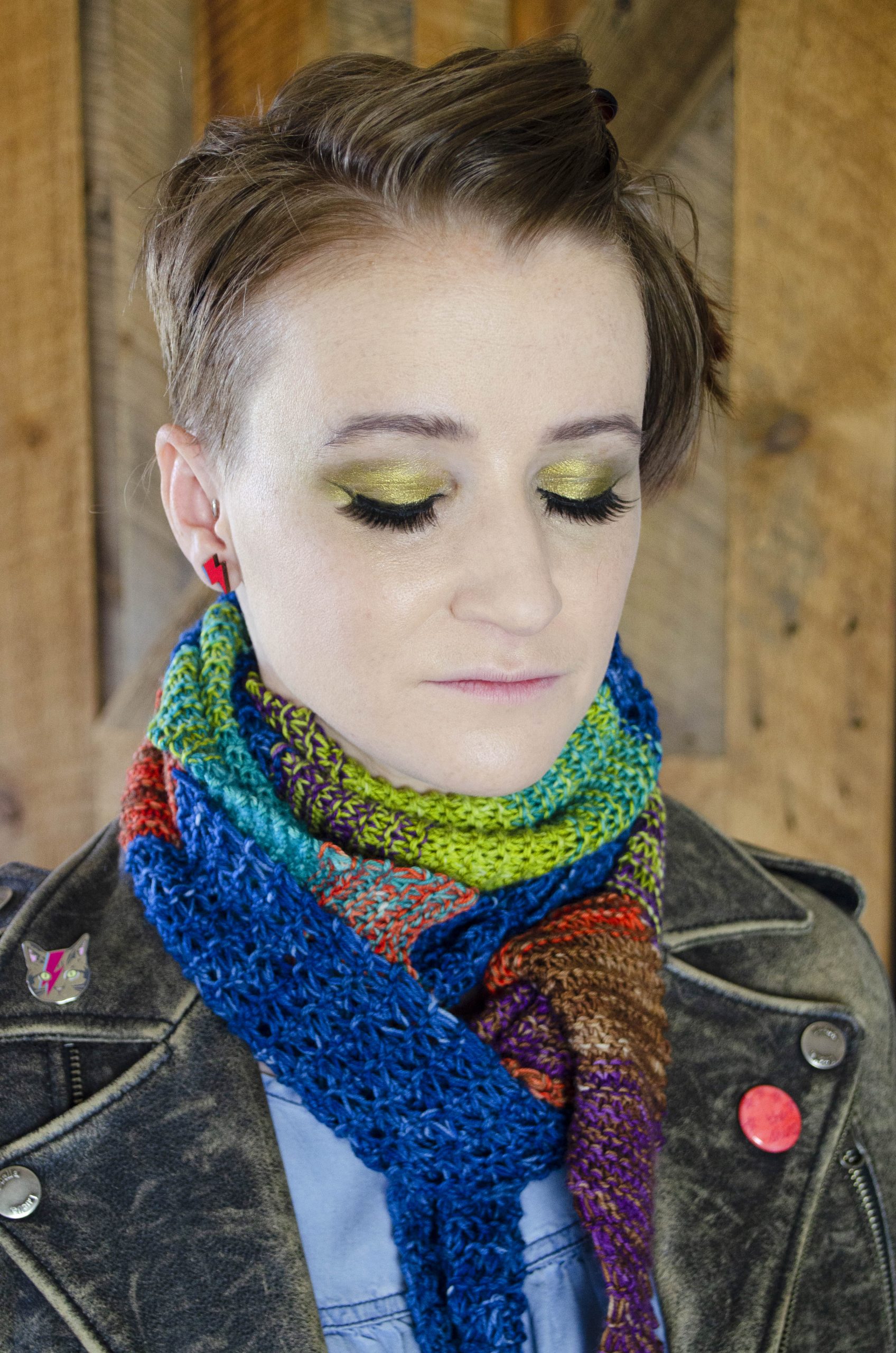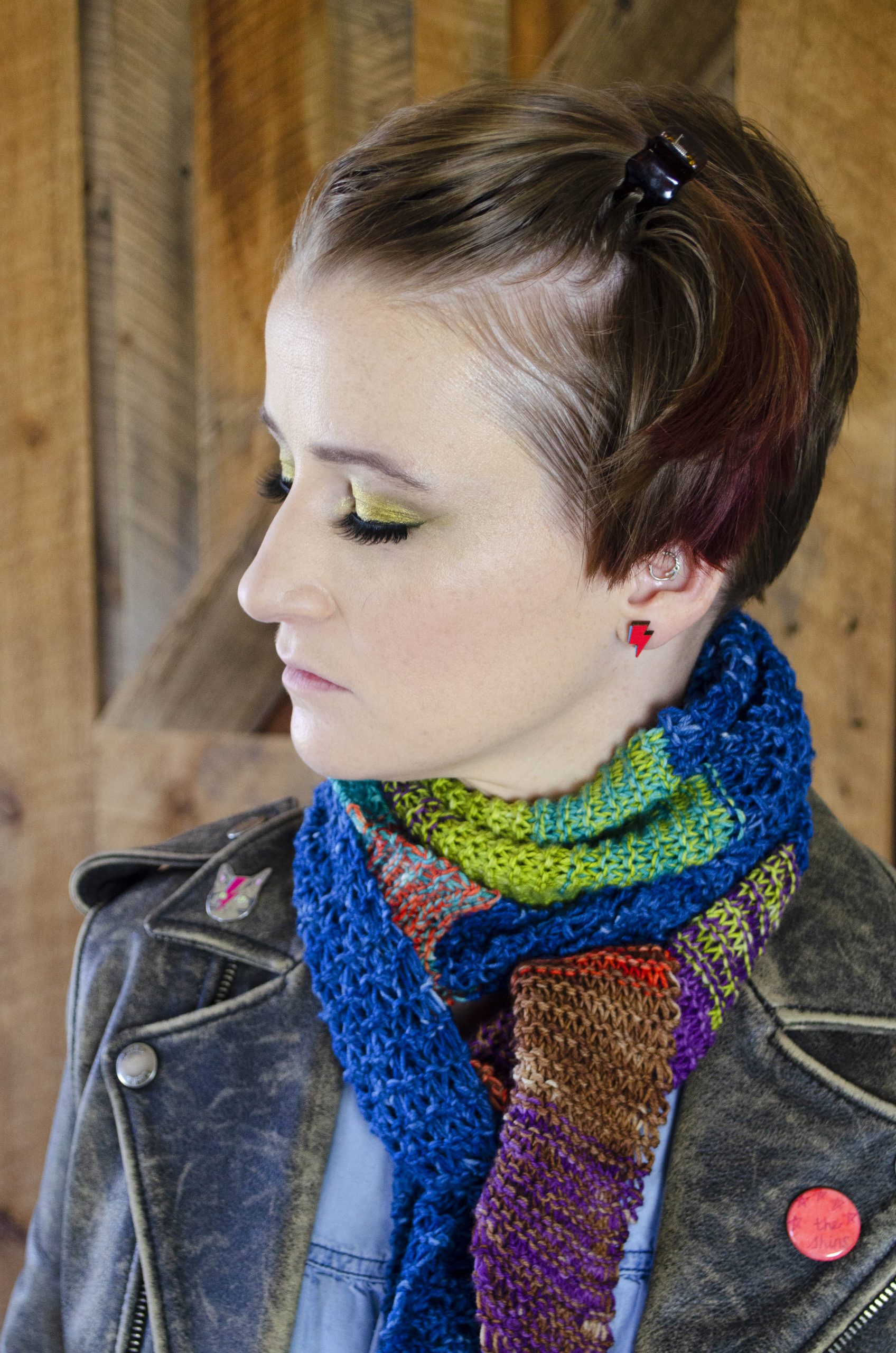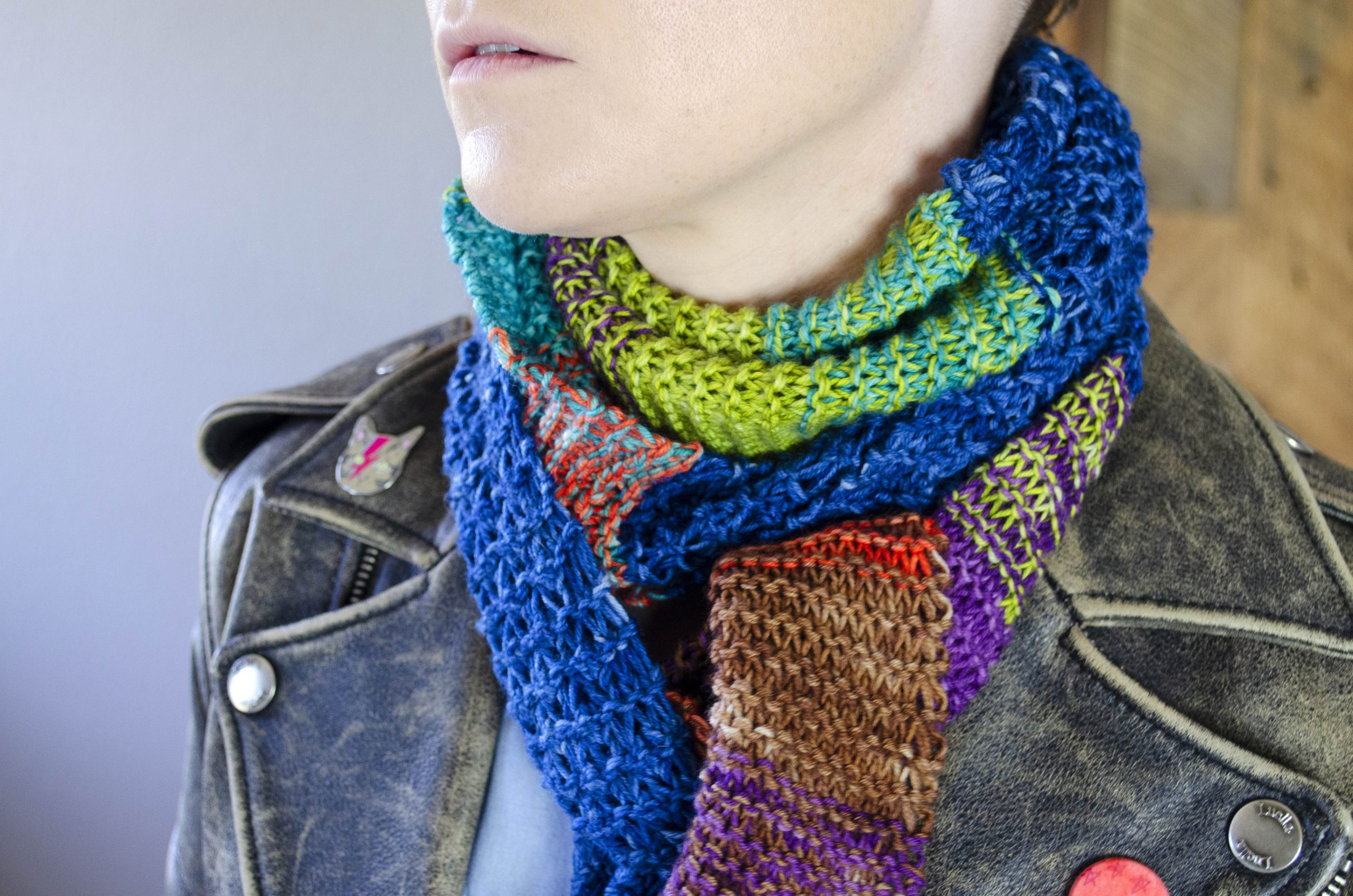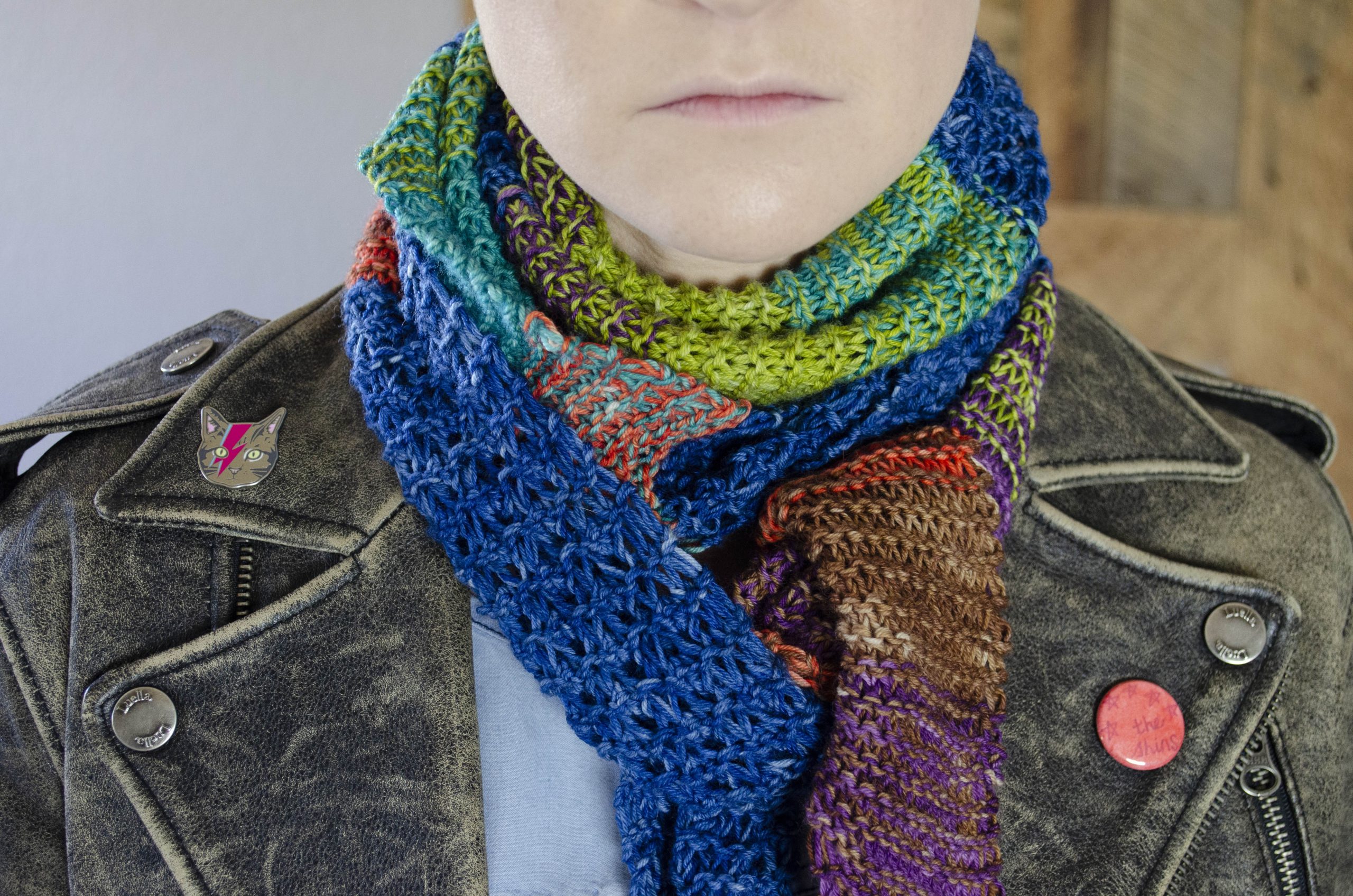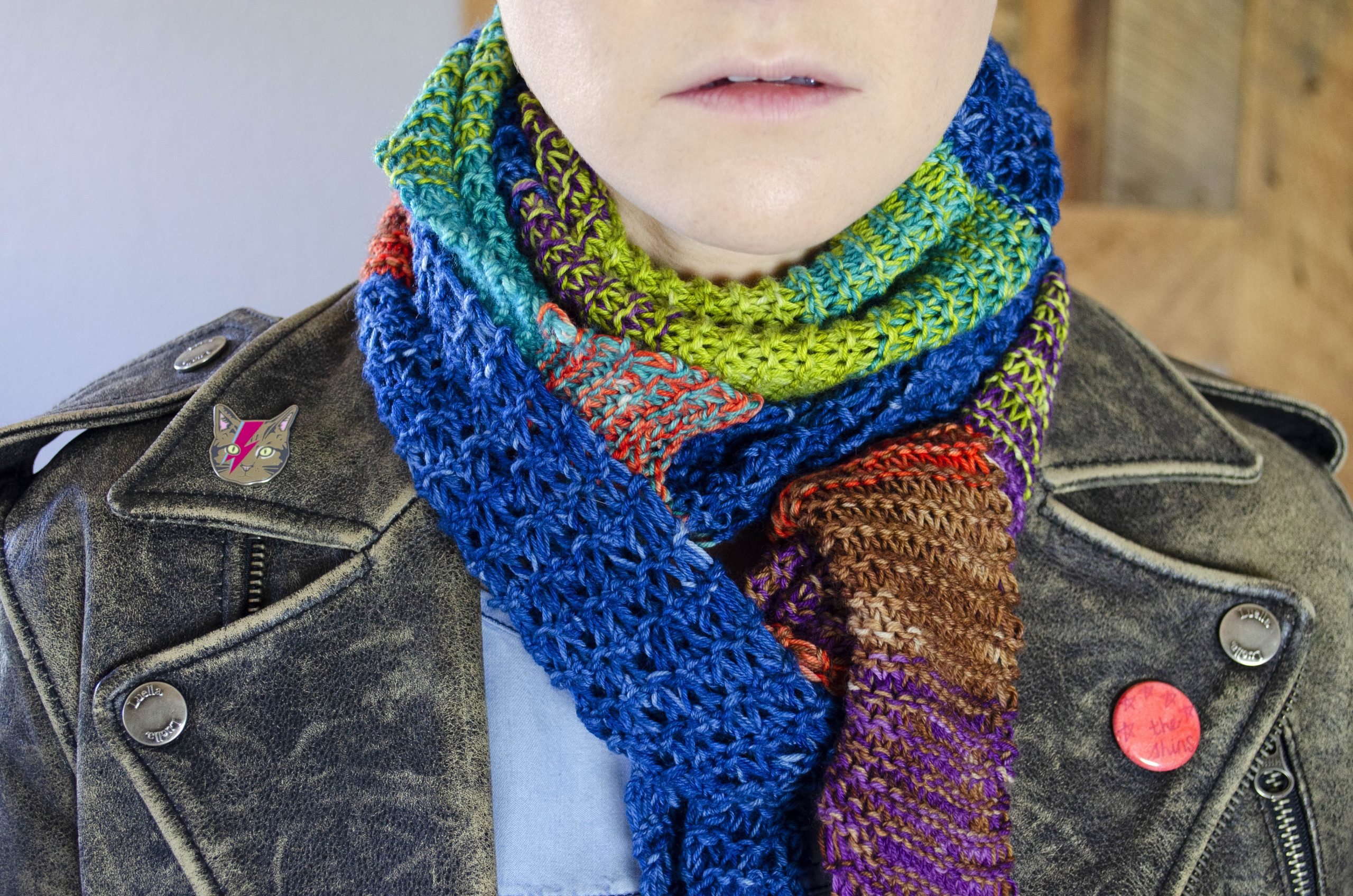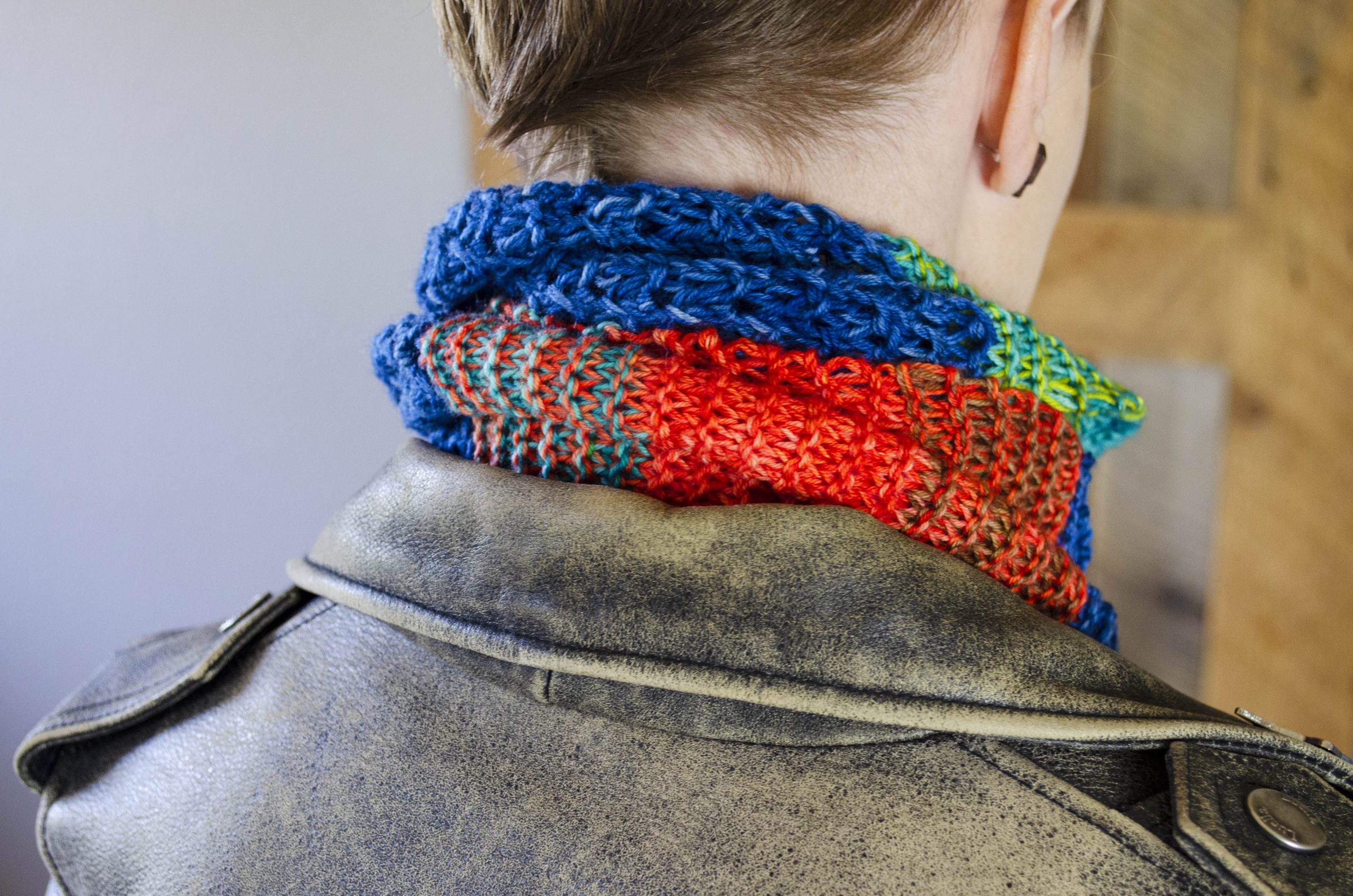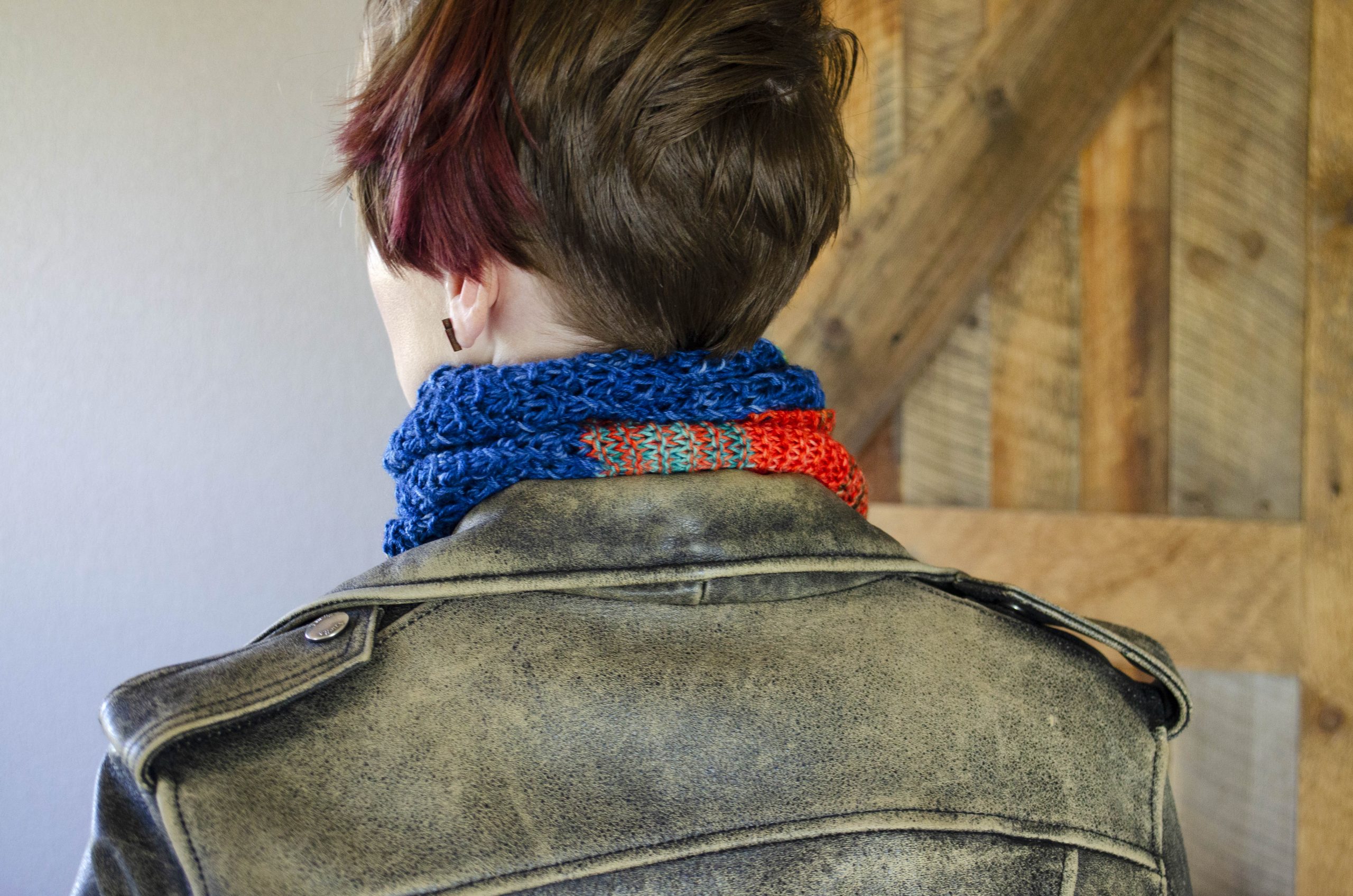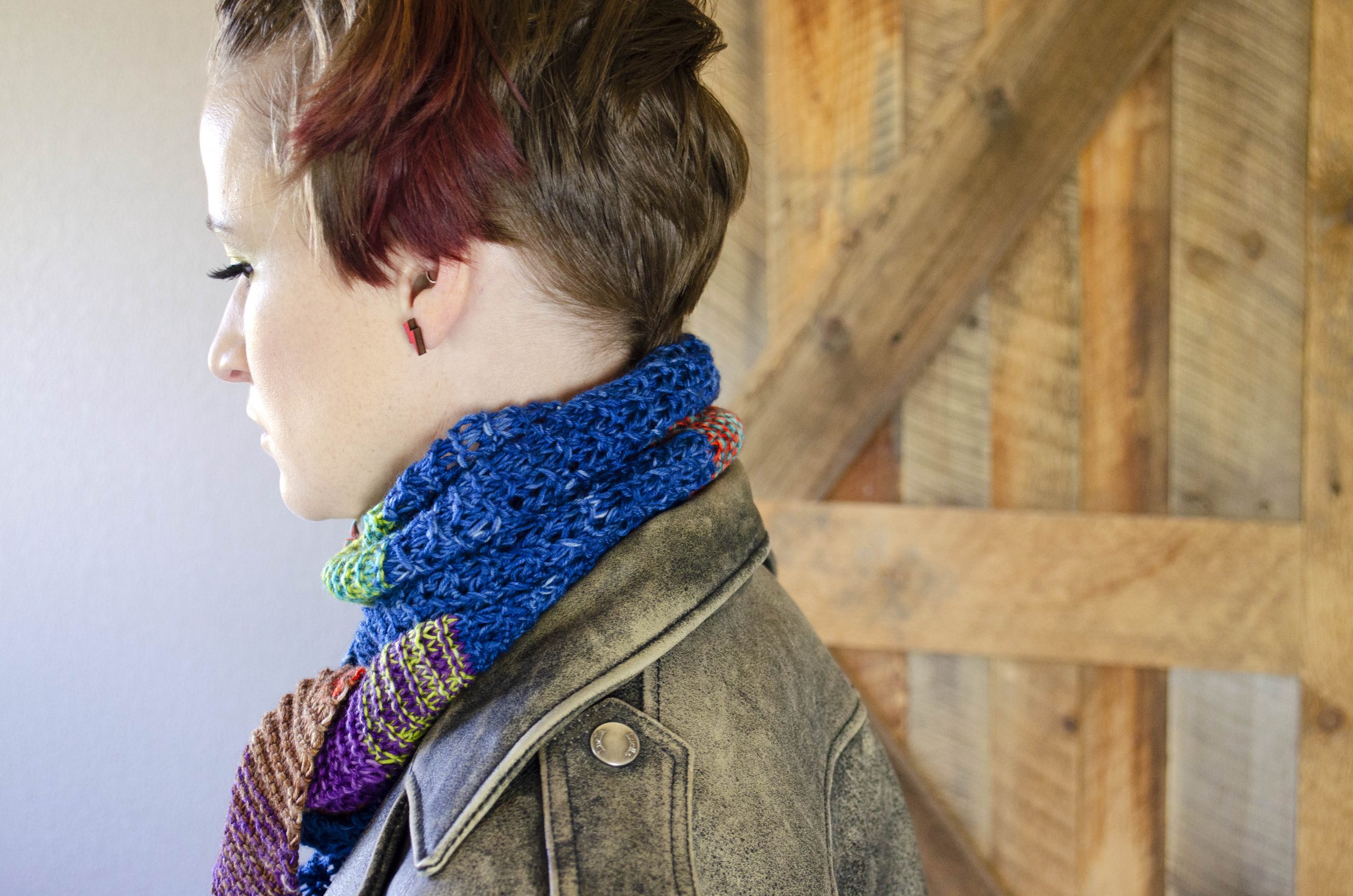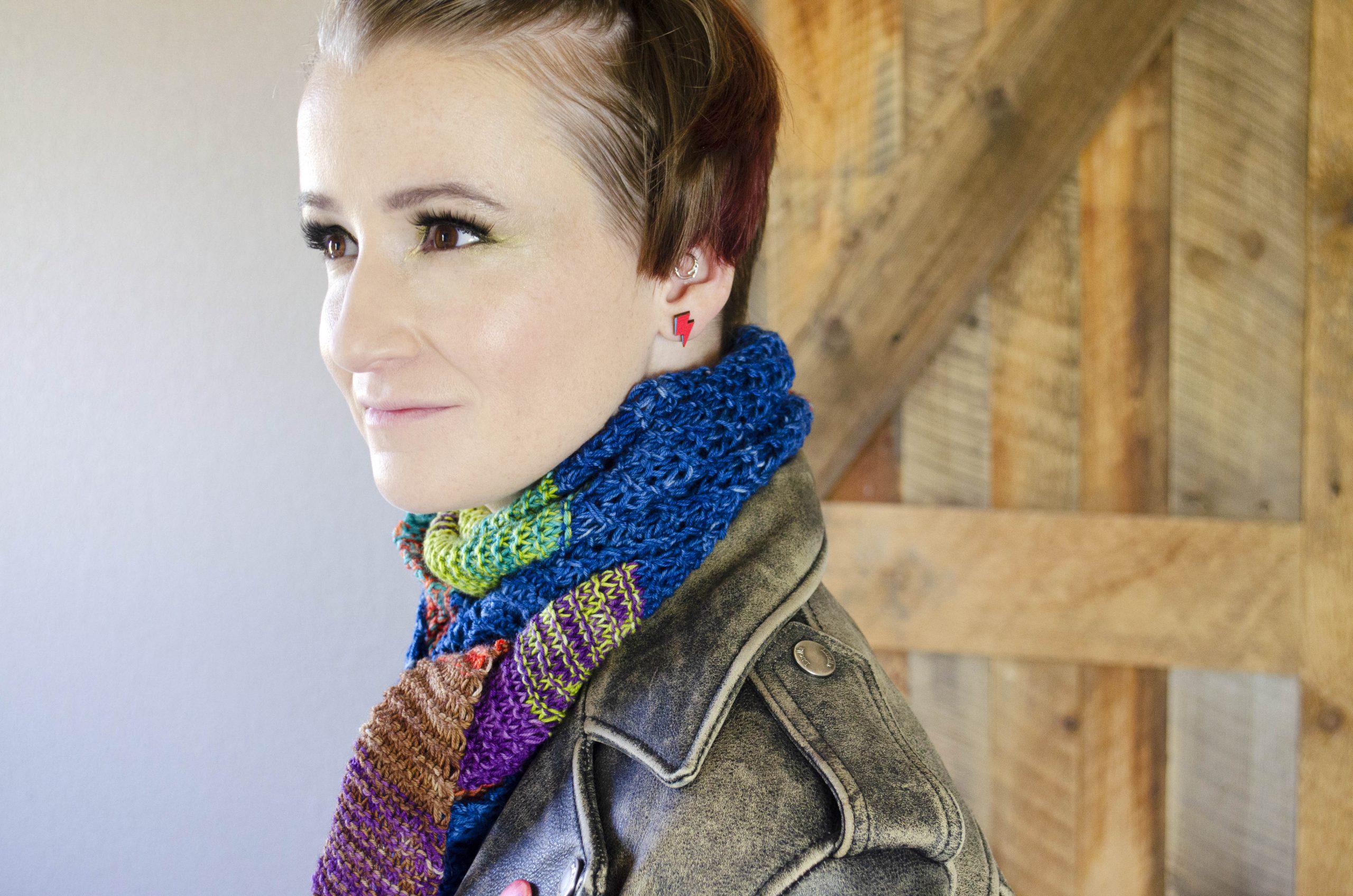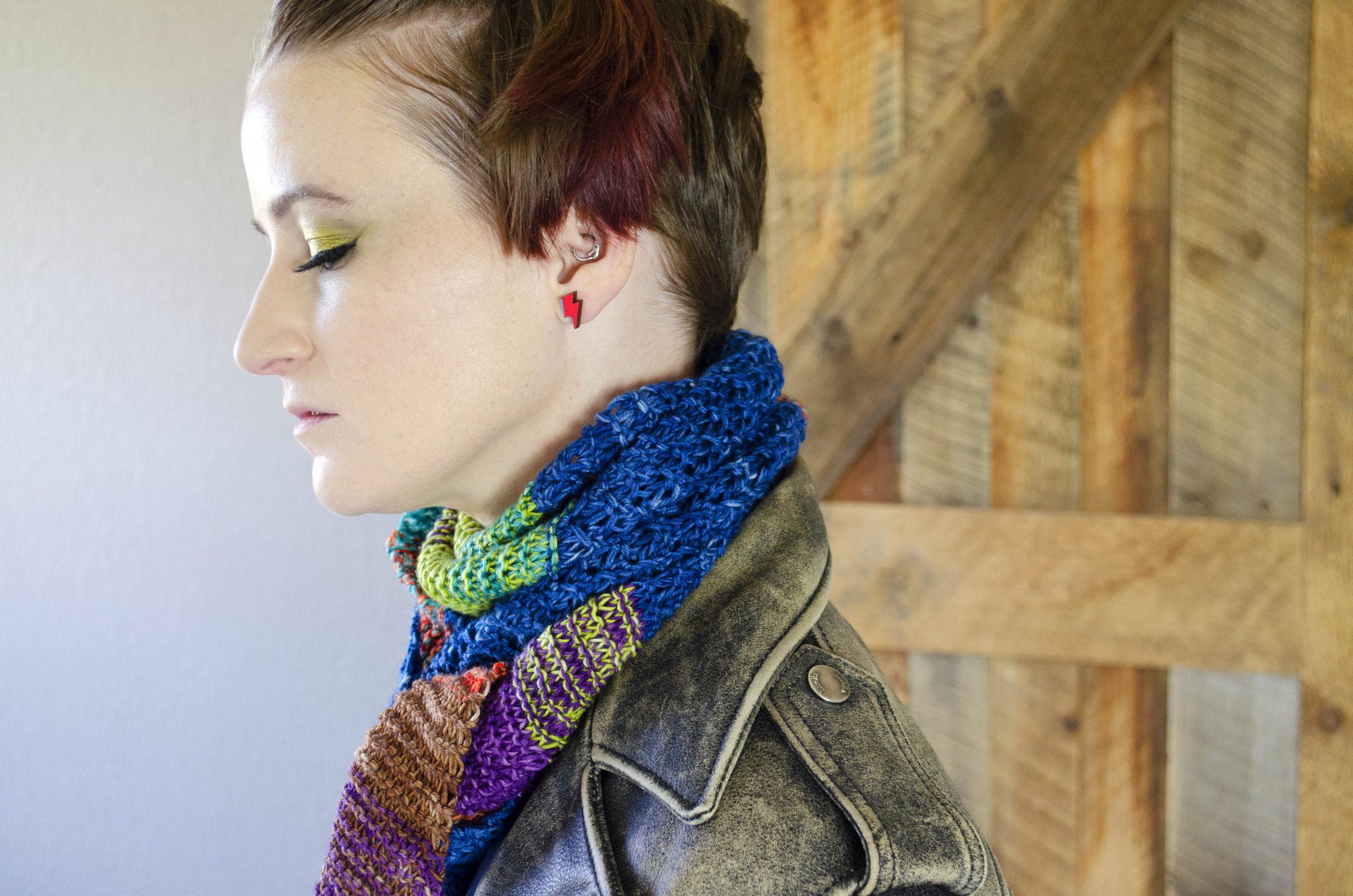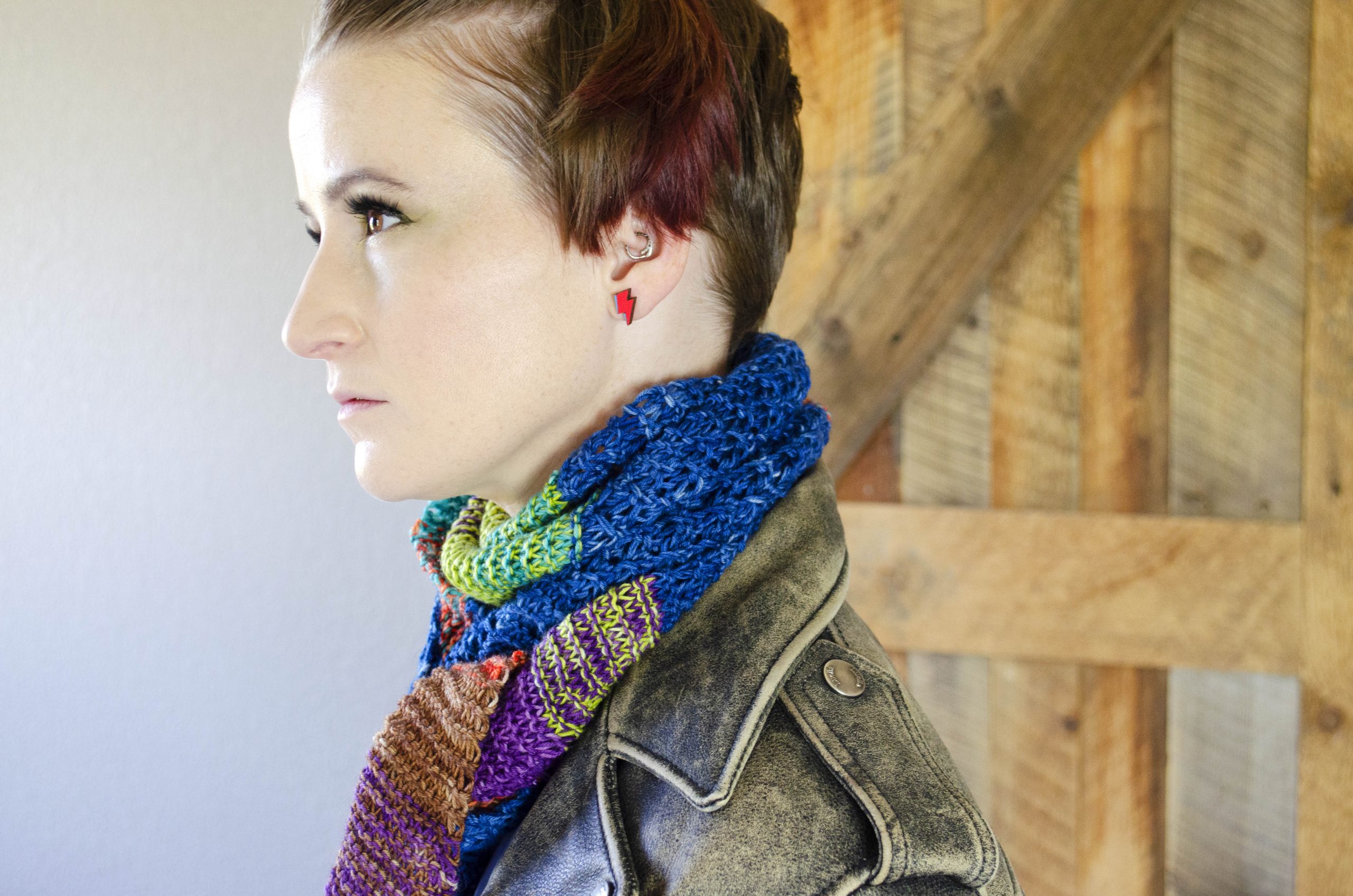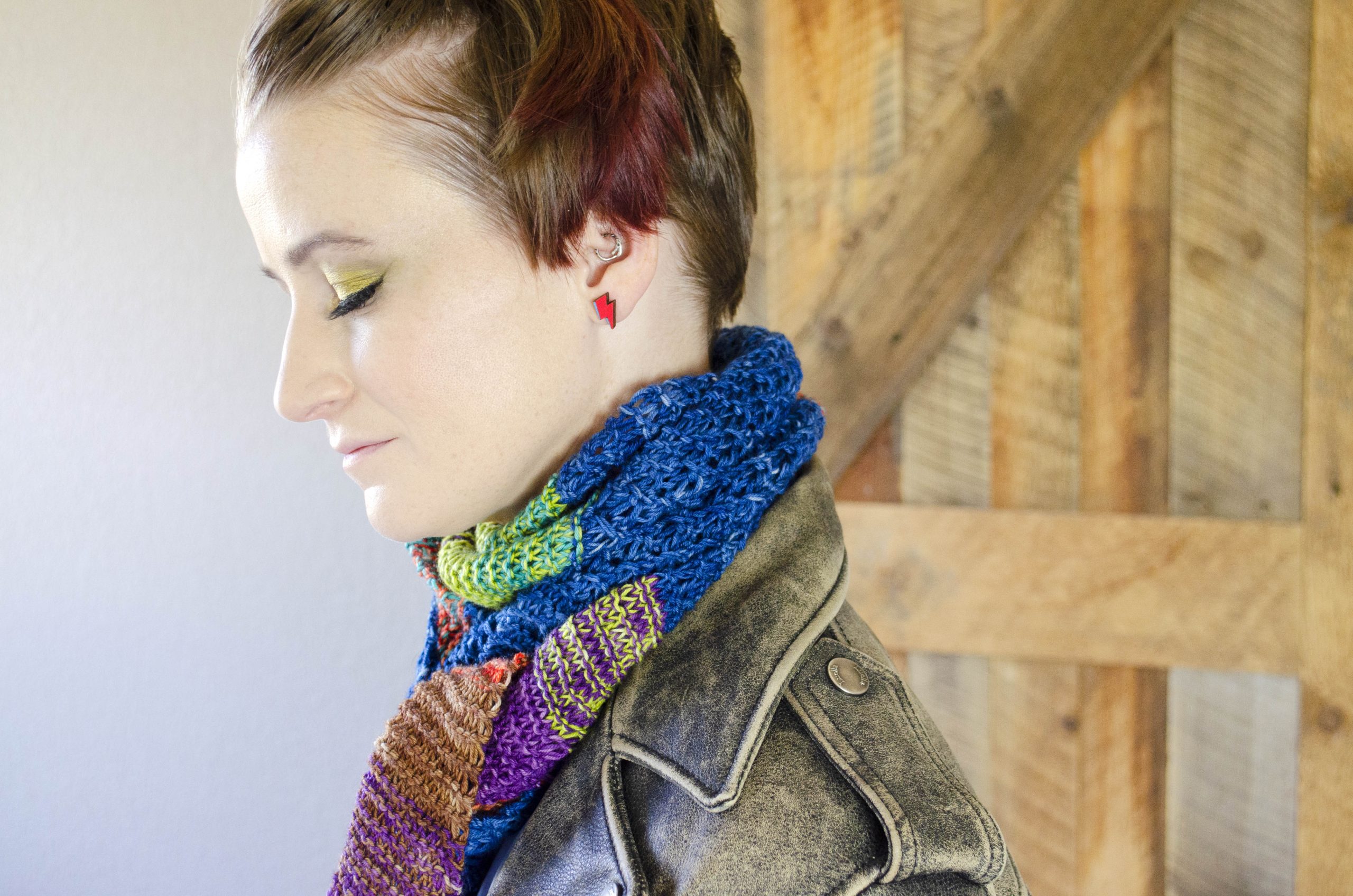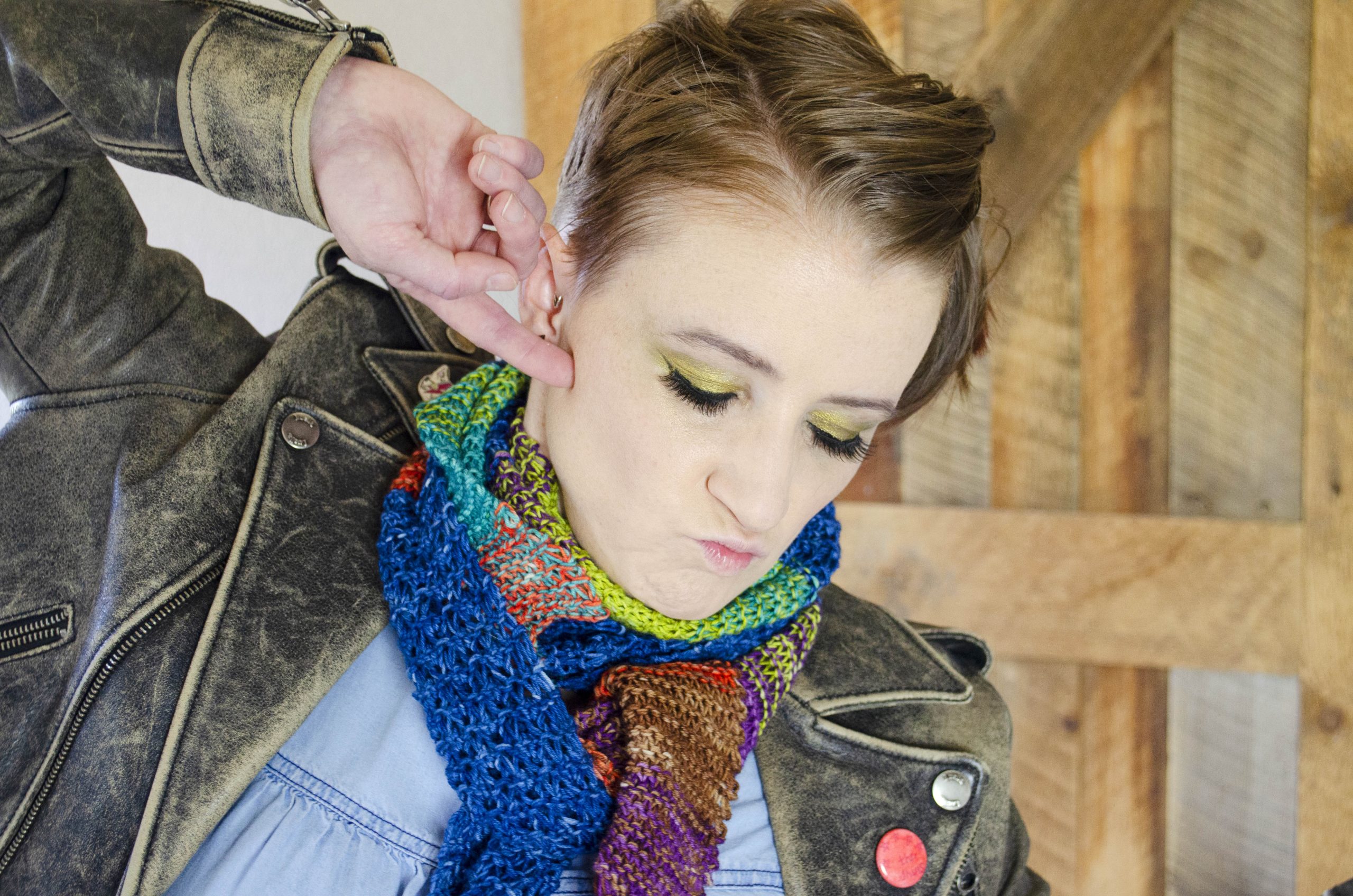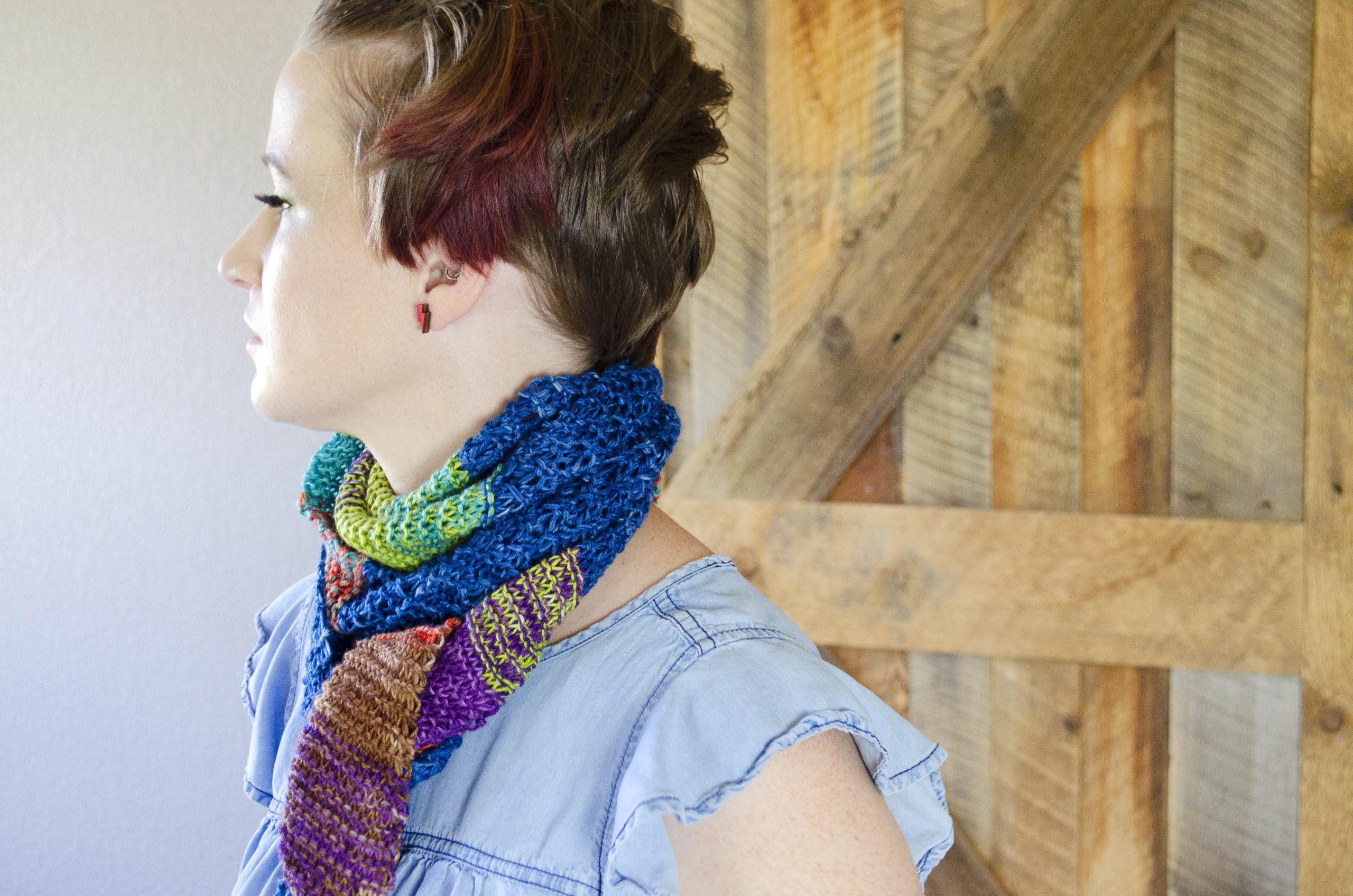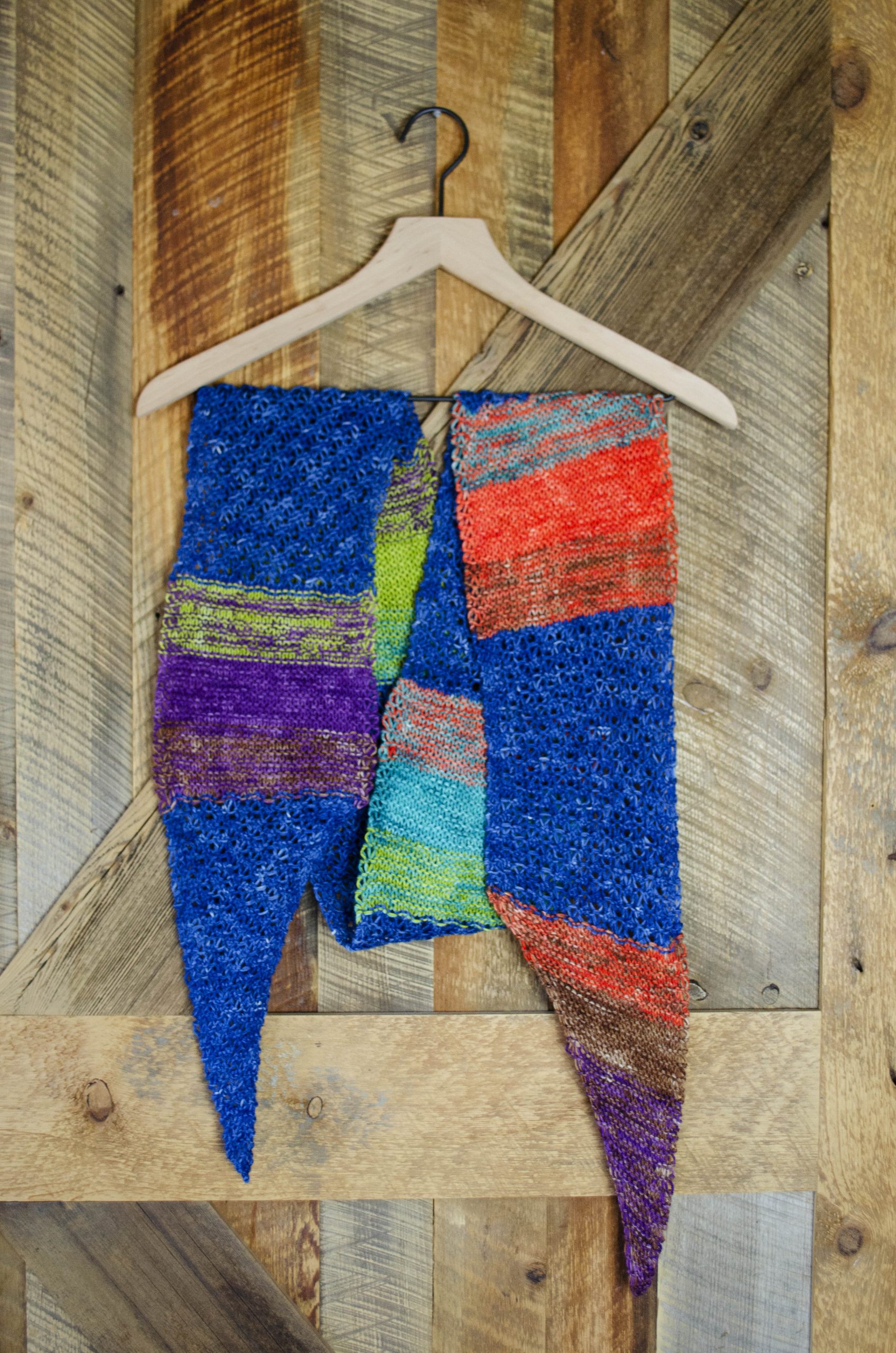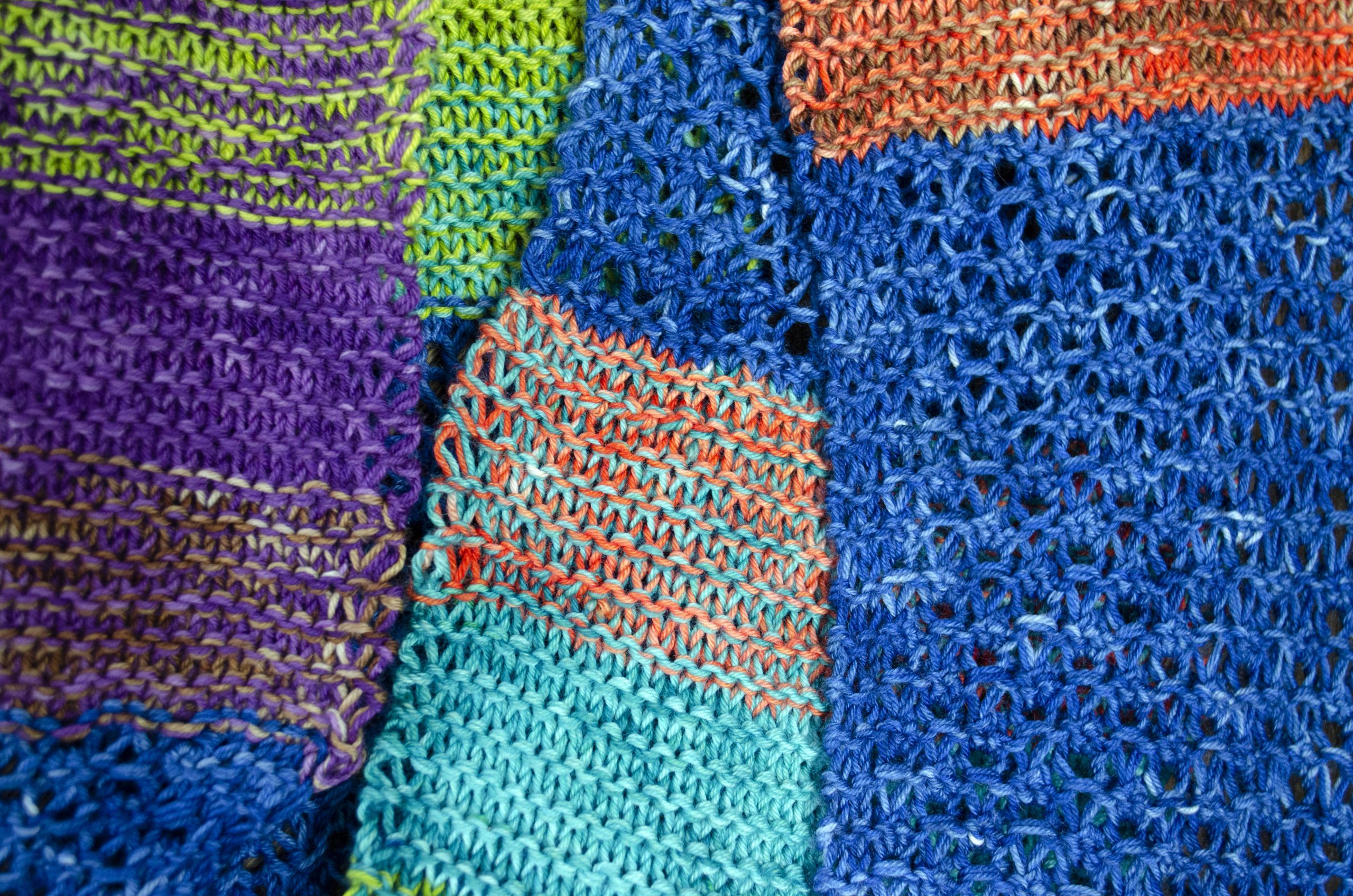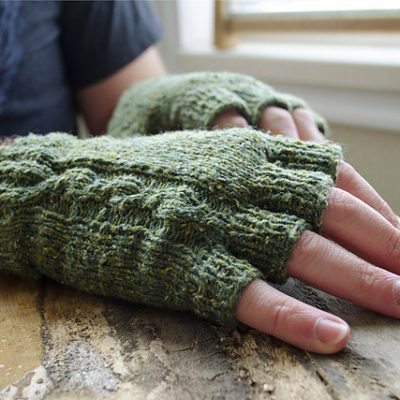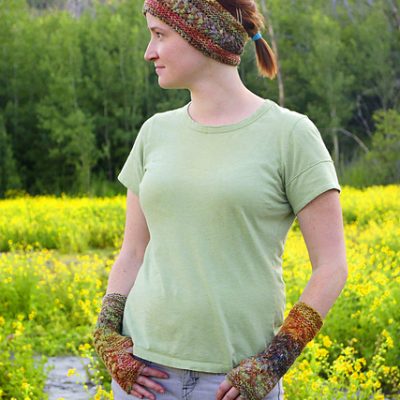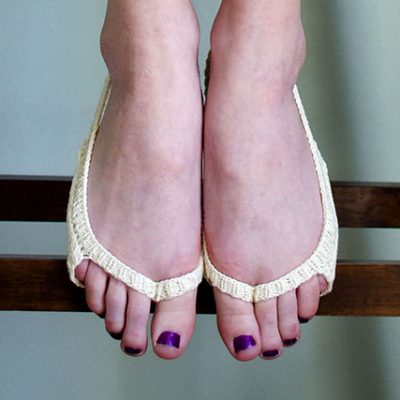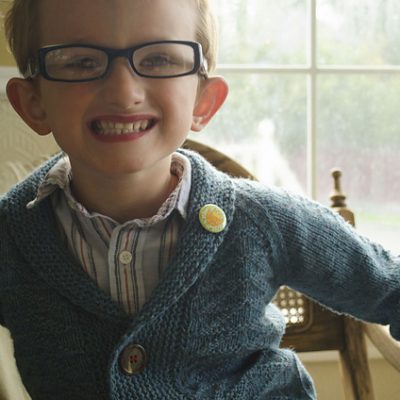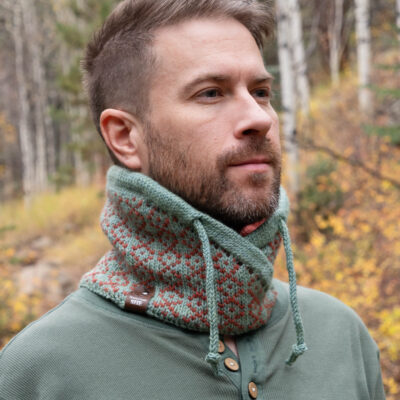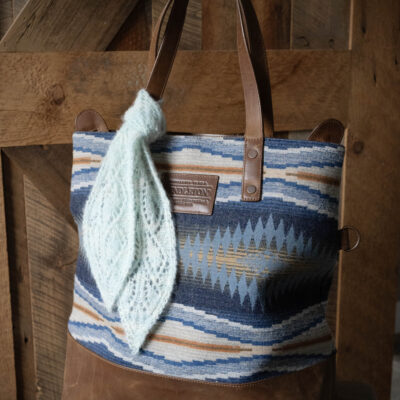$2.00
Product Description
If you’re new to knitting and feeling a bit adventurous, you’ve found the right pattern to level up your skills! If you’re an old pro, this simple design has just enough lace to keep things interesting, but not too much to disrupt your knitflix night. Priorities! This design will lay flat and look nice on both sides; there really is no right or wrong side.
Note that in this pattern, we will be using a total of 6 colors of sock weight yarn. For clarity, these colors will be referred to as (see blue text box at right):
You will be holding 2 strands of yarn together at all times throughout this knit. In the written instructions, the strands will be referred to as “AA”, or “AB”, etc., meaning a single strand of A with a second strand of A, or a single strand of A and a strand of B, and so on. It bulks up the yarn and makes the work go much faster, all while allowing us to play with color combinations! Because we will be needing to pull from 2 strands of a single color at times, ensure that you wind your yarn into a cake or into 2 equal sized balls.
If you would like to substitute a single strand of worsted weight yarn for the main color yarn, feel free to do so. The contrast yarns really do need to be sock weight if you intend to hold 2 strands double for colorplay. Another option would be to work the entire project in a single strand of worsted yarn. Simply work all garter sections without breaking yarn.
Size: One size, measuring 7”/18 cm wide by 80”/203 cm long after blocking.
Yarn: 425 yards/390 meters of sock weight yarn in main color and 75 yards/70 meters of sock weight yarn in each contrasting colors, 5 additional colors total; a total of 800 yards.
Sample shown in Knit Stitch Softy Sock colorway Julia and Knit Stitch Knot Fall Mini Sock Set.
Needles: Size US 8/5 mm straight needles, or size needed to obtain gauge.
Gauge: 18 – 19 stitches and 24 rows = 4”/10 cm square in Garter stitch (with yarn held double, after blocking).
Notions: Blocking mat, pins, blocking wires (optional, but very useful for nice straight edges), and a tapestry needle.
Techniques: Basic knitting increases and decreases, knit 3 together, and yarn over.
Photos
